

Hero’s Journey: A Guide to Becoming The Hero Of Your Story
What will your story be?
Be the hero of your story . It’s common advice from motivational speakers and life coaches, a call to arms to take centre stage and tackle life’s challenges head-on, to emerge victorious in the face of adversity, to transform through hardship.
As humans, hardwired to view the world and share experiences through the medium of stories, myths often act as powerful motivators of change. From ancient cave paintings to the Star Wars and its Death Star to Harry Potter and his battle against evil, the hero’s journey structure is a familiar one. It’s also one you need to know if you want to know how to write a book , but I digress.
This article will outline the stages, and psychological meaning, of the 12 steps of Joseph Campbell’s hero’s journey. So, are you ready to become the hero of your story? Then let the adventure begin…
Who is Joseph Campbell?
Joseph Campbell was an American professor of literature at Sarah Lawrence College, and an expert of mythology that once spent five years in a rented shack, buried in books for nine hours each day. His greatest contribution is the hero’s journey, outlined in his book The Hero with A Thousand Faces . Campbell was able to synthesise huge volumes of heroic stories, distilling a common structure amongst them.
Near the end of his life, Campbell was interviewed by Bill Moyers in a documentary series exploring his work, The Power of Myth .
Throughout their discussion, Campbell highlighted the importance of myth not just in stories, but in our lives, as symbols to inspire us to flourish and grow to our full potential.
How is the hero’s journey connected to self development?
You might be wondering what storytelling has to do with self-development. Before we dive into the hero’s journey (whether that is a male or a female hero’s journey), context will be useful. Joseph Cambell was heavily inspired by the work of Carl Jung, the groundbreaking psychologist who throughout his life worked on theories such as the shadow, collective unconscious, archetypes, and synchronicity.
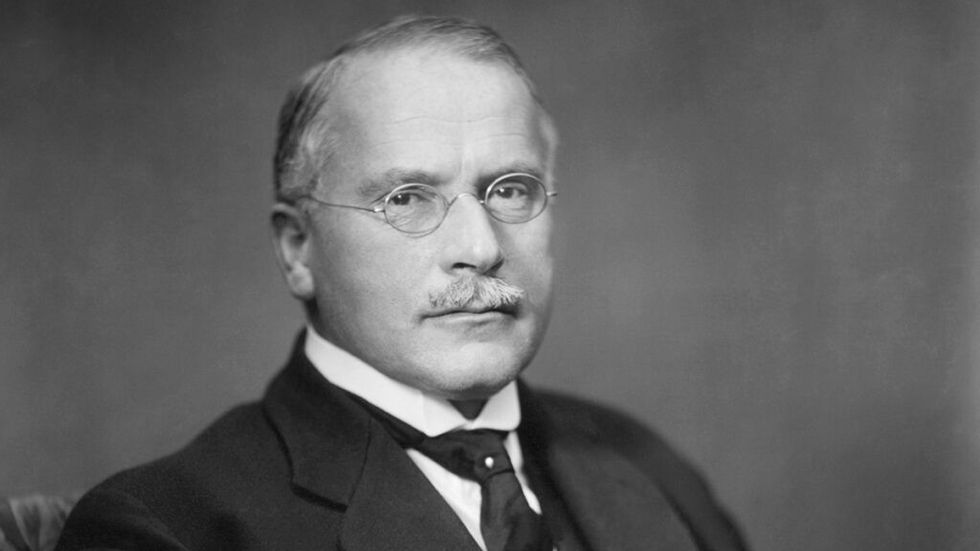
Jung’s greatest insight was that the unconscious is a vast, vibrant landscape, yet out sight from the ordinary conscious experience. Jung didn’t only theorize about the unconscious; he provided a huge body of work explaining the language of the unconscious, and the way in which it communicates with the conscious mind.
The nature of the unconscious
Due to its vast nature, the unconscious doesn’t operate like the conscious mind, which is based in language, logic, and rationality. The unconscious instead operates in the imaginal realm — using symbols and meaning that take time to be deciphered and understood consciously. Such symbols surface in dreams, visualizations, daydreams, or fantasies.
For Jung, the creative process is one in which contents of the unconscious mind are brought to light. Enter storytelling and character development — a process of myth-making that somehow captures the truth of deep psychological processes.
Campbell saw the power of myth in igniting the unconscious will to grow and live a meaningful life. With that in mind, his structure offers a tool of transformation and a way to inspire the unconscious to work towards your own hero’s journey.
The 12 steps of the hero’s journey
The hero’s journey ends where it begins, back at the beginning after a quest of epic proportions. The 12 steps are separated into three acts:
- departure (1-5)
- initiation (5-10)
- return (10-1)
The hero journeys through the 12 steps in a clockwise fashion. As Campbell explains:
“The usual hero adventure begins with someone from whom something has been taken, or who feels there is something lacking in the normal experience available or permitted to the members of society. The person then takes off on a series of adventures beyond the ordinary, either to recover what has been lost or to discover some life-giving elixir. It’s usually a cycle, a coming and a returning.”
Let’s take a closer look at each of the steps below. Plus, under each is a psychological symbol that describes how the hero’s journey unfolds, and how when the hero ventures forth, he undergoes an inner process of awakening and transformation.
1. The ordinary world
The calm before the storm. The hero is living a standard, mundane life, going about their business unaware of the impending call to adventure. At this point, the hero is portrayed as very, very human. There could be glimpses of their potential, but these circumstances restrict the hero from fulfilling them. Although well within the hero’s comfort zone, at this stage, it’s clear something significant is lacking from their life.
Psychological symbol
This is represented as a stage of ignorance, pre-awakening. Living life by the status quo, on other people’s terms, or simply without questioning if this is what you want. At this point life is lived, but not deeply satisfying.
2. Call to adventure
Next is a disruption, a significant event that threatens the ways things were. This is a challenge that the hero knows deep down will lead to transformation and change, and that the days of normality, “the way things are,” are numbered. The hero confronts the question of being asked to step into their deeper potential, to awaken the power within, and to enter a new, special world.
Many of us embark on inner-journeys following hardship in life — the death of a loved one, the loss of a job, physical or mental illness. This stage occurs when it becomes apparent that, to move through suffering, one has to look within, to adventure into the soul.
3. Refusal of the call
No compelling story would be complete without friction. The hero often resists this call to adventure, as fear and self-doubt surface at full force, and the purpose of this new life direction is questioned. Can the reluctant hero journey forth? Do they have the courage?
The only way to grow and live a deeply fulfilling life is to face the discomfort of suffering. Campbell himself once said: “ The cave you fear to enter holds the treasure you seek .” At this stage, fears, and anxieties about delving deep into the psyche arise. The temptation is to remain blissfully ignorant, to avoid discomfort, and to stay in your familiar world.
4. Meeting a mentor
As the hero faces a crisis of confidence , a wise mentor figure appears.
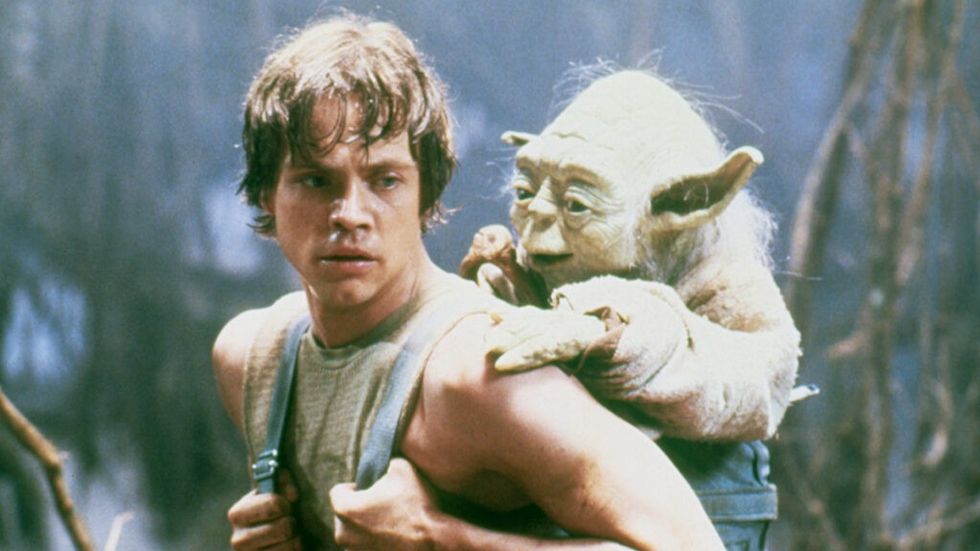
This character offers inspiration, guidance, or understanding that encourages the hero to have the self-belief to start this new adventure. In many stories, a mentor is someone else who has embarked on the hero’s journey, or someone who attempted, and failed. This person reflects the importance of this mission, reminding the hero their calling far exceeds their fear.
When the journey of exploration has to begin, people or situations enter your life at just the right time, guiding you in the right direction. This could be a close friend, a peer, a professional, such as a coach or therapist, or even a fictional character in a film or book. In most cases, these are chance encounters that contain a sense of knowing before the hero leaves on his or her adventure.
5. Crossing the threshold
This is a pivotal moment in the hero’s journey, as the initiation begins. This occurs when the hero fully commits to their quest, whether physical, emotional, or spiritual. This is the point of no return, where the reluctant hero embarks on their adventure, and has accepted that the way things were must change. The hero enters a new zone, one in which the call to adventure must be accepted. The hero’s resolve is hardened, and they understand they have a responsibility to confront what is ahead of them.
Whatever your life was before the call to action, this is a crossroads which is accepted, knowing your life may never be the same. This is a point of empowerment, where you realize that journeying within will lead you to greater self-understanding, even if those insights will dramatically change your life direction.
6. Test, allies, enemies
Now the hero has ventured outside of their comfort zone, the true test begins. This is a stage of acclimatizing to unknown lands. Unknown forces work against them, as they form bonds with allies who join them along the way, or face formidable enemies or encounters that have to be conquered. Throughout this testing time, the hero will be shaped and molded through adversity, finding deeper meaning in their life and mission.
Once the journey of self-discovery is underway, the initial burst of inspiration might be tested by the difficulty of the task. You might meet people who are able to offer advice or guide you, or those who reflect areas of yourself you have to work on.
Often, these are inner experiences, in the forms of memories, emotions, or outward tests, such as difficult circumstances that challenge your resolve and commitment to your new life direction.
7. Approach to the inmost cave
Having already crossed the threshold into the unknown and the uncertain, having faced obstacles and enemies, and having begun to utilize their qualities along the way, the next stage is another threshold.
This is the beating heart of the hero’s challenge, where again self-doubt and fear can arise, as another threshold has to be crossed. This is often a period of respite, giving the hero time to pause and reflect. Will the hero make the leap?
The hero’s journey has ups and downs. There may be quick wins in the beginning — your new life direction may go well, or inner-work may lead you to a new place of calm or confidence. But then, out of nowhere, comes an even bigger challenge, surfacing as a question mark to the person you’ve become. Life often has a way of presenting the right challenges at the right time…
This is the life-or-death moment. This can be a meeting with an ultimate enemy or facing the hero’s deepest fear. There is an awareness that if the hero fails, their new world, or their life, could be destroyed.
Everything the hero has fought for up to this point, all the lessons learned along the journey, all the hidden potentials actualized, will have to be utilized to survive this supreme ordeal, for the hero to be victorious. Either way, the hero will undergo a form of death, and leave the ordeal forever changed.
There are inner challenges that have to be confronted on the journey of self-discovery. This might be in the form of trauma that has to be confronted and healed, people with whom you have to have difficult conversations, or fears you have to face, actions that in the past you never thought you’d be capable of. But, with the skills you’ve learned along the way, this time you’ll be ready. But it won’t be easy.
9. Reward (seizing the sword)
Through great adversity comes triumph. Having confronted their greatest fear, and survived annihilation, the hero learns a valuable lesson, and is now fully transformed and reborn — with a prize as a reward.
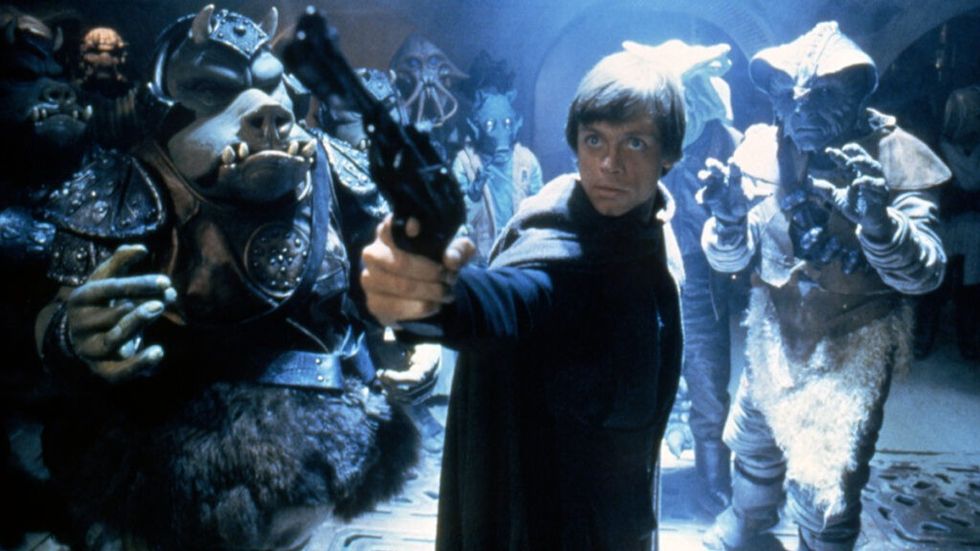
This object is often symbolized as a treasure, a token, secret knowledge, or reconciliation, such as the return of an old friend or lover. This prize can assist in the return to the ordinary world — but there are still a few steps to come.
When confronting deep inner fears or challenges, you are rewarded with deep insights or breakthroughs. That might be in the form of achieving a significant goal or inwardly having a sense of peace or reconciliation with your past, or moments that have previously felt unresolved. As a spiritual process, this may also be the realization that behind suffering and pain lies freedom or inner peace.
10. The road back
Having traveled into distant, foreign lands and slain the dragon, now it’s time for the hero to make their return journey. This stage mirrors the original call to adventure and represents another threshold.
The hero may be understanding their new responsibility and the consequences of their actions, and require a catalyst to make the journey back to the ordinary world with their prize.
The hard work has been done, the ultimate fear confronted, new knowledge found. Now, what’s the next step? For many, the initial stages of growth come with a period of renunciation or are symbolized by an outward journey away from home, or away from familiarity.
Then comes the stage of returning to familiarity, or the things left behind — be it family, friends, locations, or even behaviors that were once loved and sacrificed during the journey.
11. Resurrection
When it appears the hero is out of the woods, there comes a final confrontation — an encounter with death itself. Transformed inwardly and with a personal victory complete, the hero faces a battle that transcends their individual quest, with its consequences far-reaching, for entire communities or even humanity itself.
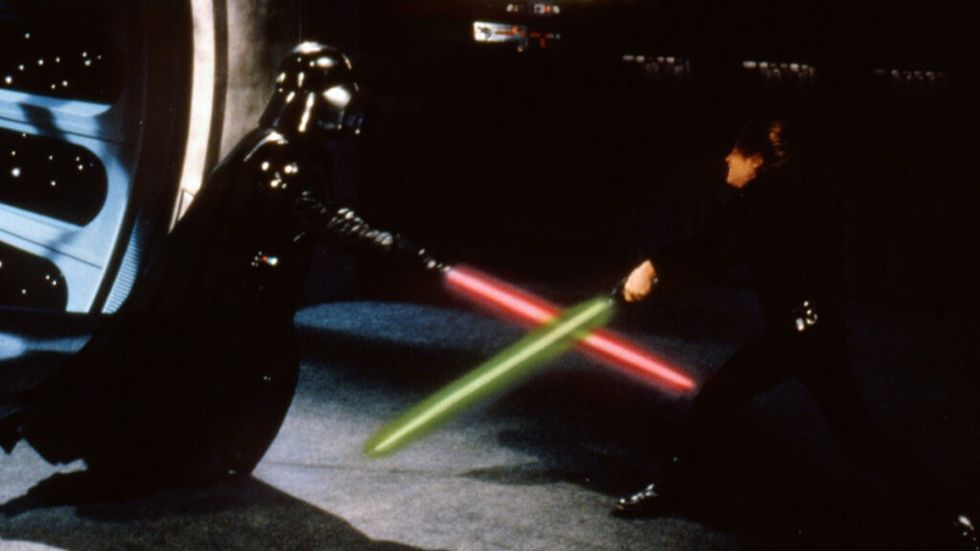
This purification solidifies the hero’s rebirth, as their new identity fully emerges just in time to return to the ordinary world.
In Maslow’s hierarchy of needs, self-actualization is secondary to self-transcendence. In other words, once inner battles have been faced, and the alchemy of psychological transformation is underway, the next stage is to apply the newfound insights and knowledge to a bigger cause — supporting others, or standing up a mission that will benefit the wider world.
12. Return with the elixir
Following the final battle, the hero finally returns home. By now, personal transformation is complete, they’re returning home a different person. Having faced indescribable hardship, the hero returns with added wisdom and maturity. The elixir is the treasure they’ve returned with, ready to share with the ordinary world. This could be a sense of hope , freedom, or even a new perspective to assist those originally left behind.
The hero has a new level of self-awareness, seeing the ordinary world through fresh eyes. They’ve left internal conflict behind. There’s an understanding that things will never be the same, but that the hero’s journey was part of their destiny.
Then comes the ultimate prize: a final reconciliation, acceptance from the community, celebration, redemption. Whatever the prize, there are three elements: change , success , and proof of the journey .
Following a transformative psychic process, there’s an understanding of what is within your control. The “ordinary world” may have many elements that remain the same, but this is accompanied by a realization that when you change, so does your reality. Previously modes of thinking may be replaced, as bridges are built with your past, giving opportunity for a renewed approach to life.
What can we learn from the hero’s journey?
At the time of writing this article, I’m in the UK visiting my family for the first time in 18 months. As I walked down paths I’d walked throughout my childhood, I was struck by how much I’ve changed over the years. A passage from T.S Eliot’s poem Little Gidding came to mind:
“We shall not cease from exploration. And the end of all our exploring. Will be to arrive where we started. And know the place for the first time.”
I reflected on the notion of coming full circle — to begin a journey, outwardly or inwardly, before finding yourself back at the beginning, transformed. In spiritual traditions, the circle is a powerful symbol of timelessness, death and rebirth, totality, and wholeness. Aptly, the 12 steps of the hero’s journey are depicted as a circle. It’s not a coincidence.
What can we learn from the hero’s journey? In a way, it is similar to the writer’s journey. Above all else, it’s a reminder that we each within us have a purpose, a quest and a mission in this life that can and will invoke our truest potential. The path isn’t easy — there are many, many challenges along the way. But at the right time, people and situations will come to our aid.
If you’re able to confront the mission head-on and take bold steps along the way — just like all the heroes of fiction before you, from Shakespeare’s characters to Luke Skywalker and Rey from the universe brought to us by George Lucas — then you will be transformed, and then you can return to where you started, reborn, ready to share your gifts and your lessons with the world.
- hero's journey
- storytelling
Author exploring the soul of self-development, the mystery of existence, and the heartful path to maximising the human potential. Get your free copy of my book, Mindsets for Mindfulness , for practical guidance to overcome the ego on the journey of growth. More at MindThatEgo .com and on YouTube .

Woman Stops Visiting Her Baby Daughter in the Hospital – So the Married Nurses Taking Care of Her Take Her In
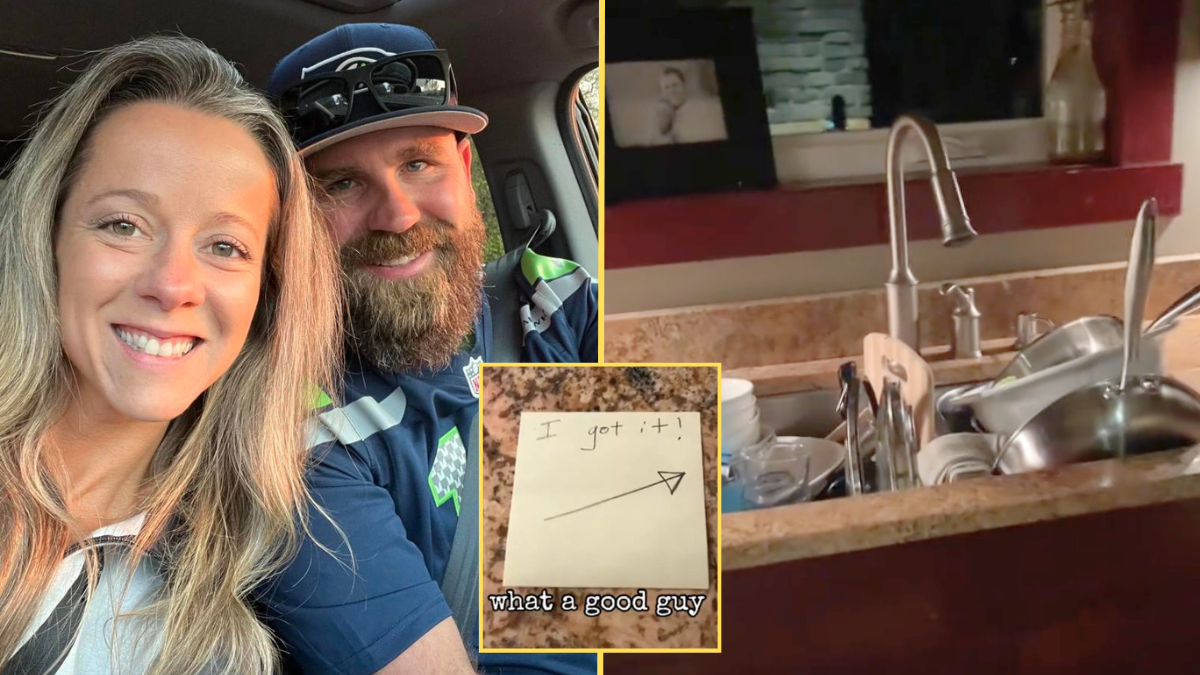
Woman Wakes Up to Husband’s Dirty Dishes in the Sink – Instead of Cleaning Up, He Left Her a Note With 3 Words
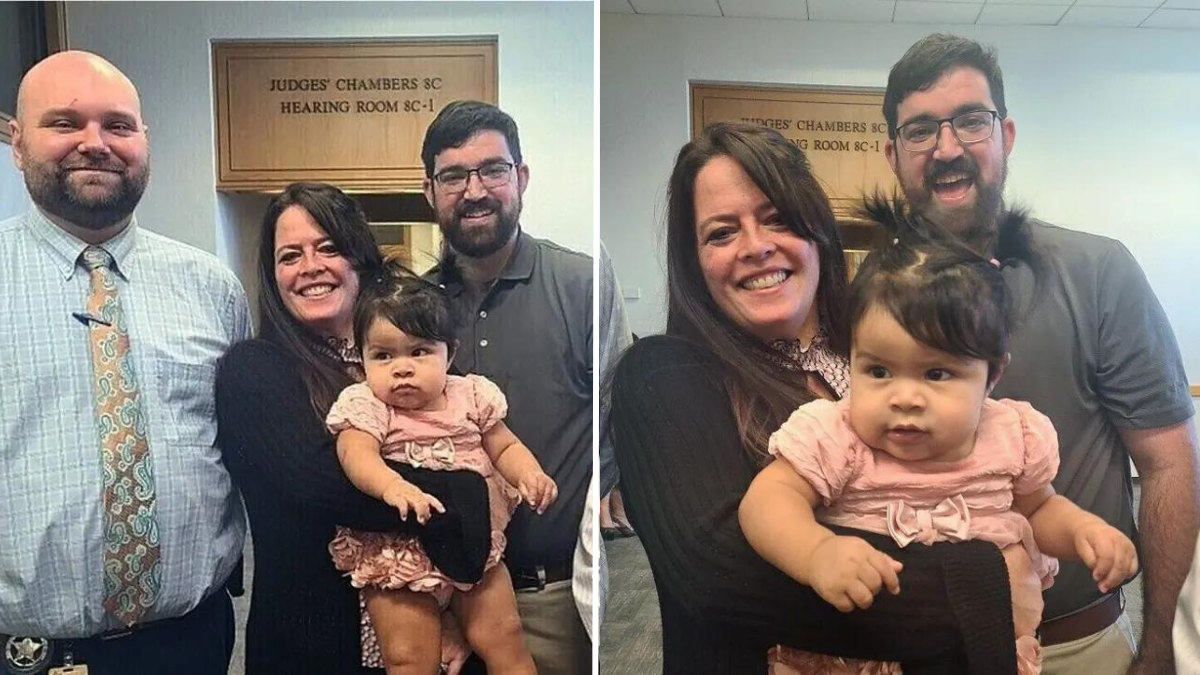
Couple Hears “Cats Fighting” Outside – But What They Find in a Blanket Is Something Completely Different
- Screenwriting \e607
- Cinematography & Cameras \e605
- Directing \e606
- Editing & Post-Production \e602
- Documentary \e603
- Movies & TV \e60a
- Producing \e608
- Distribution & Marketing \e604
- Fundraising & Crowdfunding \e60f
- Festivals & Events \e611
- Sound & Music \e601
- Games & Transmedia \e60e
- Grants, Contests, & Awards \e60d
- Film School \e610
- Marketplace & Deals \e60b
- Off Topic \e609
- This Site \e600
Unraveling The Concept of The Hero’s Journey in Filmmaking
This podcast featuring christopher vogler opens up a lot of storytelling ideas..
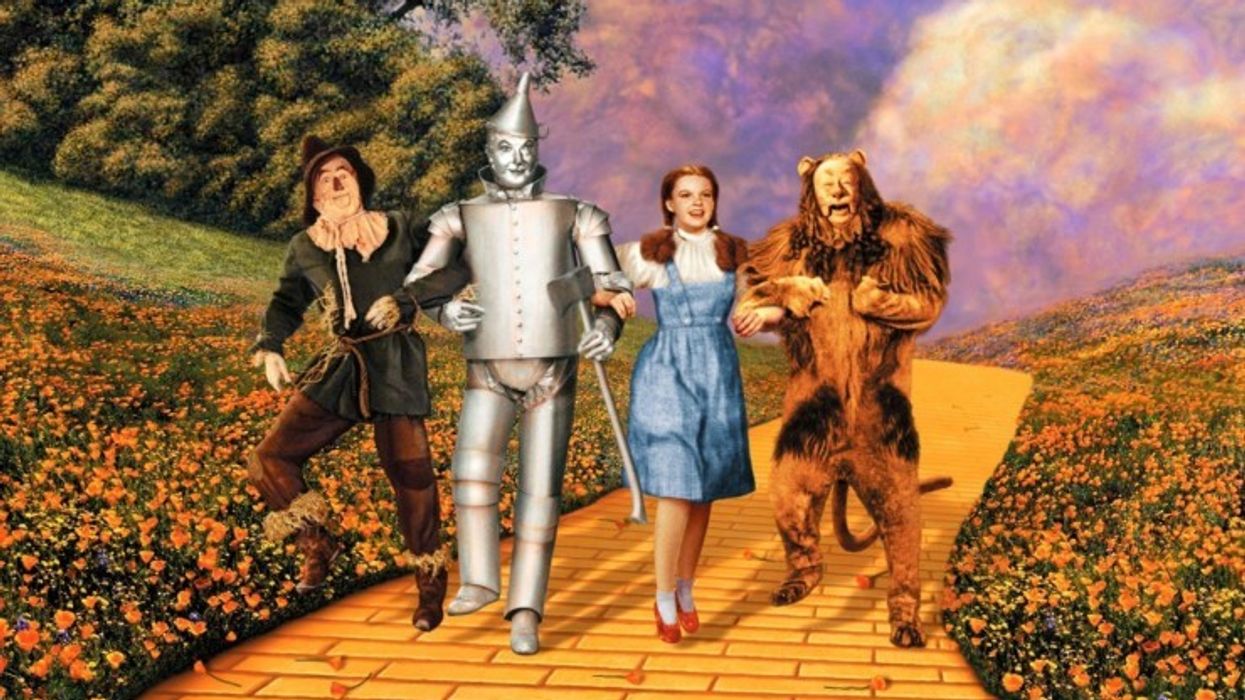
Many great stories, whether told through the written word or on the silver screen, share a common thread—a hero's journey. The Hero's Journey is a narrative structure that has been a fundamental part of storytelling for centuries, and it continues to be a powerful tool in filmmaking.
One of my favorite screenwriting books is ' The Writer’s Journey ', which details Joseph Campbell's journey through storytelling and takes the writer's POV.
This was the first book I read on screenwriting and one of the best.
Christopher Vogler wrote the book, and he was recently on the Film Crux podcast talking about these concepts. So check out the podcast and we'll talk after.
What is the Hero's Journey?
'Star Wars'
I figured that after the podcast you may need a refresher on Joseph Campbell and his concept of The Hero's Journey. This not a new concept; it dates back to ancient mythology and has been used by countless cultures throughout history.
Campbell was a scholar of comparative mythology and wrote a book called "The Hero with a Thousand Faces." He identified a common pattern in myths and stories from around the world, a pattern he called the monomyth or the Hero's Journey .
The Hero's Journey is a template that outlines the stages a hero typically goes through in a story. While there may be variations and adaptations, the core structure remains consistent.
It begins with the hero's ordinary world, followed by a call to adventure, a journey into the unknown, encounters with allies and enemies, a transformation or revelation, and finally, a return to the ordinary world with newfound wisdom or gifts.
A Diagram of The Hero's Journey
The Hero's Journey Diagram
Wikipedia Commons
The Hero's Journey is often depicted as a circular diagram, with each stage connected to the next in a cycle. there are many different names for the story beats in the circle.
The image above is from Wikipedia.
Here's a linear representation of Campbell's idea with beats I use when writing.
- Ordinary World : The hero's normal life before the adventure begins.
- Call to Adventure : The hero receives a call to leave their ordinary world and embark on a journey.
- Refusal of the Call : The hero hesitates or resists the call initially.
- Meeting the Mentor: The hero encounters a mentor or guide who provides advice or assistance.
- Crossing the Threshold : The hero commits to leaving the ordinary world and entering the unknown.
- Tests, Allies, and Enemies : The hero faces challenges, makes allies, and encounters adversaries.
- Approaching the Cave : The hero gets closer to the central challenge or conflict.
- Ordeal : The hero faces a major test, often their most significant challenge.
- Reward : The hero overcomes the ordeal and gains a reward or insight.
- The Road Back: The hero begins the journey back to the ordinary world.
- Resurrection : The hero faces one final, climactic challenge.
- Return with the Elixir: The hero returns to the ordinary world, transformed, and brings something valuable back.
Examples of The Hero's Journey in Film
'The Matrix'
Warner Bros.
Many iconic films have embraced the Hero's Journey structure to great effect. Here are a few examples:
- Star Wars : George Lucas drew heavily from Joseph Campbell's work when creating the Star Wars saga. Luke Skywalker's journey from a farm boy on Tatooine to a Jedi Knight follows the Hero's Journey pattern closely.
- The Lord of the Rings : J.R.R. Tolkien's epic fantasy trilogy, adapted into films by Peter Jackson, showcases the Hero's Journey through Frodo's quest to destroy the One Ring.
- The Matrix: The Wachowskis used the Hero's Journey to guide Neo's transformation from a computer hacker to "The One" who can save humanity.
- The Wizard of Oz: Dorothy's adventure in the Land of Oz is a classic Hero's Journey, complete with a call to adventure, allies, adversaries, and a return home with newfound wisdom.
How Filmmakers Utilize the Hero's Journey
- Creating Relatable Characters: One of the most significant advantages of the Hero's Journey in filmmaking is its ability to create relatable characters. Audiences connect with heroes who face challenges, make sacrifices, and experience personal growth. By following this narrative structure, filmmakers can craft characters that resonate with viewers on a deep emotional level.
- Building Tension and Conflict: The Hero's Journey provides a built-in framework for tension and conflict. As the hero progresses through the various stages, they encounter obstacles, adversaries, and setbacks, keeping the audience engaged and invested in the story's outcome.
- Engaging Audiences on an Emotional Level: The Hero's Journey is not just about physical challenges; it's also about the hero's internal journey. Filmmakers can use this structure to explore the hero's emotions, fears, and desires, allowing the audience to connect with the character on an emotional level.
- Crafting Memorable Endings: The return of the hero to the ordinary world at the end of their journey often leaves a lasting impact on the audience. Filmmakers can use this moment to deliver powerful messages, resolutions, or open-ended conclusions that leave viewers thinking long after the credits roll.
More Reading on The Hero's Journey
The Lion King (2019)
This is No Film School, of course we've written about this concept many times before. so here are some articles for you to peruse as well...
- What Are the Fundamentals of the Hero's Journey?
- What Is the 'Call to Adventure' in Storytelling?
- Joseph Campbell's Monomyth: A Brief History and Introduction
- Puppets Reenact Your Favorite Movie Moments to Explain Joseph Campbell’s ‘Hero’s Journey’
- The Other Hero's Journey: The Emotional Struggle of Screenwriting
- Over 48 Hours of Joseph Campbell Lectures Released for Free on Spotify
- This Supercut Takes You Through the Hero's Journey of over 50 Iconic Films
The Hero's Journey is a storytelling archetype deeply embedded in our collective consciousness. It provides filmmakers with a powerful tool to engage and captivate audiences.
By understanding and utilizing this narrative structure, filmmakers can create compelling stories with relatable characters, tension, and emotional depth.
Whether you're crafting a space opera or an intimate drama, the Hero's Journey remains a timeless blueprint for successful storytelling in filmmaking.
Let me know what you think in the comments.
- The Other Hero's Journey: The Emotional Struggle of Screenwriting ›
- This Supercut Takes You Through the Hero's Journey of over 50 Iconic Films ›
- What Are the Fundamentals of the Hero's Journey? ›
- Writing 101: What Is the Hero's Journey? 2 Hero's Journey ... ›
- The Hero's Journey: Joseph Campbell on His Life and Work (The ... ›
- Hero's journey - Wikipedia ›
Should You Use A Dutch Angle Shot?
Camera angles can communicate a lot of different emotions to your audience, but none so much as the dutch angle..
The Dutch angle can be used to make an audience feel a host of different emotions, like fear, uneasiness, even drunkenness. It can help heighten psychological distress and tension, creating a cinematic environment that makes for a thrilling, suspenseful experience. As creative and effective as this technique may be, its use doesn't always produce the desired effect overall (for reasons we'll get to later).
Here is our extensive coverage on how to use the dutch angle .
Jacob T. Swinney explores the subtle and overt use of this shot in an assortment of films in the video below:
Also known as the Dutch tilt, canted, German, and oblique angle, this shot was first used in Robert Wiese's 1920 horror film The Cabinet of Dr. Caligari . However, throughout the course of cinematic history this camera technique has gone through seasons of being considered in vogue and passé.
Whether or not you know which season this angle currently in, you can still use it as long as you know the major tenet of using -- just about anything and everything, including this angle, in your film. It must serve your story. Throwing it in arbitrarily just won't cut it; it must be motivated. For example, if you've got a scene in which a man and woman are chatting about scones, you might want to go more conventional. However, if they're chatting about scones and the woman has a gun in her pocket with orders to assassinate the man, that would be an excellent time to get weirder.
Besides, they don't have to be extreme; they can be subtle. However, if you do want them to be extreme, they can be -- but again, they have to be motivated. One of my favorite uses of this tilt comes from Roger Deakins' work in Doubt. He masterfully uses the dutch tilts to, you guessed it, cast doubt on the nature of Father Flynn's relationship with a young boy in the parish school. He doesn't use them throughout the entire movie, though; they appear in only a few shots, but those few shots are just enough to convey the important message that no one can be certain whether or not Sister Aloysius is correct in her suspicions.
This is the takeaway. A Dutch angle is like salt: you can use it boldly for flavor, but too much might leave a bad taste in people's mouths.
Source: Keyframe
What Are The Best Thriller Movies of All Time?
How good is sora actually an interview with the filmmakers behind "air head", canon improves servo zooming and cfexpress usage in latest r5 and r3 updates, highly-requested firmware updates for sony a1 and other alpha cameras finally arrive, directly upload to davinci resolve with new blackmagic camera 8.6 public beta, what is a foil character, what is the male gaze, 50+ camera angles, shots, and movements, light 90% brighter with arri’s new l-series plus led fresnels, an intricate breakdown of time travel movies.

Improve your writing in one of the largest and most successful writing groups online
Join our writing community!
The Hero’s Journey Ultimate Writing Guide with Examples

by Alex Cabal
What do Star Wars , The Hobbit , and Harry Potter have in common? They’re all examples of a story archetype as old as time. You’ll see this universal narrative structure in books, films, and even video games.
This ultimate Hero’s Journey writing guide will define and explore all quintessential elements of the Hero’s Journey—character archetypes, themes, symbolism, the three act structure, as well as 12 stages of the Hero’s Journey. We’ll even provide a downloadable plot template, tips for writing the Hero’s Journey, and writing prompts to get the creative juices flowing.
What is the Hero’s Journey?
The Hero’s Journey is a universal story structure that follows the personal metamorphosis and psychological development of a protagonist on a heroic adventure. The protagonist goes through a series of stages to overcome adversity and complete a quest to attain an ultimate reward—whether that’s something tangible, like the holy grail, or something internal, like self confidence.
In the process of self-discovery, the archetypal Hero’s Journey is typically cyclical; it begins and ends in the same place (Think Frodo leaving and then returning to the Shire). After the epic quest or adventure has been completed by overcoming adversity and conflict—both physical and mental—the hero arrives where they once began, changed in some as they rose to meet the ultimate conflict or ordeal of the quest.
Joseph Campbell and Christopher Vogler
The Hero’s Journey has a long history of conversation around the form and its uses, with notable contributors including Joseph Campbell and the screenwriter Christopher Vogler , who later revised the steps of the Hero’s Journey.
Joseph Campbell’s “monomyth” framework is the traditional story structure of the Hero’s Journey archetype. Campbell developed it through analysis of ancient myths, folktales, and religious stories. It generally follows three acts in a cyclical, rather than a linear, way: a hero embarks on a journey, faces a crisis, and then returns home transformed and victorious.
Campbell’s ideation of the monomyth in his book The Hero With a Thousand Faces was influenced by Carl Jung’s perspective of psychology and models of self-transformation , where the Hero’s Journey is a path of transformation to a higher self, psychological healing, and spiritual growth.
While Campbell’s original take on the monomyth included 17 steps within the three acts, Christopher Vogler, in his book The Writer’s Journey , refined those 17 steps into 12 stages—the common formula for the modern structure many writers use today.
It’s also worth checking out Maureen Murdock’s work on the archetype, “The Heroine’s Journey.” This takes a look at the female Hero’s Journey, which examines the traditionally masculine journey through a feminist lens.
Hero’s Journey diagram: acts, steps, and stages
Below, you can see the way Volger’s Hero’s Journey is broken into twelve story beats across three acts.

Why is the Hero’s Journey so popular?
The structure of the Hero’s Journey appears in many of our most beloved classic stories, and it continues to resonate over time because it explores the concept of personal transformation and growth through both physical and mental trials and tribulations. In some sense, every individual in this mythic structure experiences rites of passage, the search for home and the true authentic self, which is mirrored in a protagonist’s journey of overcoming obstacles while seeking to fulfill a goal.
Additionally, the Hero’s Journey typically includes commonly shared symbols and aspects of the human psyche—the trickster, the mother, the child, etc. These archetypes play a role in creating a story that the reader can recognize from similar dynamics in their own relationships, experiences, and familiar world. Archetypes allow the writer to use these “metaphorical truths”—a playful deceiver, a maternal bond, a person of innocence and purity—to deeply and empathetically connect with the reader through symbolism. That’s why they continue to appear in countless stories all around the world.
Hero’s Journey character archetypes
Character archetypes are literary devices based on a set of qualities that are easy for a reader to identify, empathize with, and understand, as these qualities and traits are common to the human experience.
It should be noted that character archetypes are not stereotypes . While stereotypes are oversimplifications of demographics or personality traits, an archetype is a symbol of a universal type of character that can be recognized either in one’s self or in others in real life.
The following archetypes are commonly used in a Hero’s Journey:
The hero is typically the protagonist or principal point-of-view character within a story. The hero transforms—internally, externally, often both—while on their journey as they experience tests and trials and are aided or hindered by the other archetypes they encounter. In general, the hero must rise to the challenge and at some point make an act of sacrifice for the ultimate greater good. In this way, the Hero’s Journey represents the reader’s own everyday battles and their power to overcome them.
Heroes may be willing or unwilling. Some can be downright unheroic to begin with. Antiheroes are notably flawed characters that must grow significantly before they achieve the status of true hero.
The mentor often possesses divine wisdom or direct experience with the special world, and has faith in the hero. They often give the hero a gift or supernatural aid, which is usually something important for the quest: either a weapon to destroy a monster, or a talisman to enlighten the hero. The mentor may also directly aid the hero or present challenges to them that force internal or external growth. After their meeting, the hero leaves stronger and better prepared for the road ahead.
The herald is the “call to adventure.” They announce the coming of significant change and become the reason the hero ventures out onto a mysterious adventure. The herald is a catalyst that enters the story and makes it impossible for the hero to remain in status quo. Existing in the form of a person or an event, or sometimes just as information, they shift the hero’s balance and change their world.
The Threshold Guardian
This archetype guards the first threshold—the major turning point of the story where the hero must make the true commitment of the journey and embark on their quest to achieve their destiny. Threshold guardians spice up the story by providing obstacles the hero must overcome, but they’re usually not the main antagonist.
The role of the threshold guardian is to help round out the hero along their journey. The threshold guardian will test the hero’s determination and commitment and will drive them forward as the hero enters the next stage of their journey, assisting the development of the hero’s character arc within the plot. The threshold guardian can be a friend who doesn’t believe in the hero’s quest, or a foe that makes the hero question themselves, their desires, or motives in an attempt to deter the hero from their journey. Ultimately, the role of the threshold guardian is to test the hero’s resolve on their quest.
The Shape Shifter
The shape shifter adds dramatic tension to the story and provides the hero with a puzzle to solve. They can seem to be one thing, but in fact be something else. They bring doubt and suspense to the story and test the hero’s ability to discern their path. The shape shifter may be a lover, friend, ally, or enemy that somehow reveals their true self from the hero’s preconceived notion. This often causes the hero internal turmoil, or creates additional challenges and tests to overcome.
The shadow is the “monster under the bed,” and could be repressed feelings, deep trauma, or festering guilt. These all possess the dark energy of the shadow. It is the dark force of the unexpressed, unrealized, rejected, feared aspects of the hero and is often, but not necessarily, represented by the main antagonist or villain.
However, other characters may take the form of the shadow at different stages of the story as “foil characters” that contrast against the hero. They might also represent what could happen if the hero fails to learn, transform, and grow to complete their quest. At times, a hero may even succumb to the shadow, from which they will need to make sacrifices to be redeemed to continue on their overall quest.
The Trickster
The trickster is the jester or fool of the story that not only provides comic relief, but may also act as a commentator as the events of the plot unfold. Tricksters are typically witty, clever, spontaneous, and sometimes even ridiculous. The trickster within a story can bring a light-hearted element to a challenge, or find a clever way to overcome an obstacle.

Hero’s Journey themes and symbols
Alongside character archetypes, there are also archetypes for settings, situations, and symbolic items that can offer meaning to the world within the story or support your story’s theme.
Archetypes of themes, symbols, and situations represent shared patterns of human existence. This familiarity can provide the reader insight into the deeper meaning of a story without the writer needing to explicitly tell them. There are a great number of archetypes and symbols that can be used to reinforce a theme. Some that are common to the Hero’s Journey include:
Situational archetypes
Light vs. dark and the battle of good vs. evil
Death, rebirth, and transformation in the cycle of life
Nature vs. technology, and the evolution of humanity
Rags to riches or vice versa, as commentary on the material world and social status
Wisdom vs. knowledge and innocence vs. experience, in the understanding of intuition and learned experience
Setting archetypes
Gardens may represent the taming of nature, or living in harmony with nature.
Forests may represent reconnection with nature or wildness, or the fear of the unknown.
Cities or small towns may represent humanity at its best and at its worst. A small town may offer comfort and rest, while simultaneously offering judgment; a city may represent danger while simultaneously championing diversity of ideas, beings, and cultures.
Water and fire within a landscape may represent danger, change, purification, and cleansing.
Symbolic items
Items of the past self. These items are generally tokens from home that remind the hero of where they came from and who or what they’re fighting for.
Gifts to the hero. These items may be given to the hero from a mentor, ally, or even a minor character they meet along the way. These items are typically hero talismans, and may or may not be magical, but will aid the hero on their journey.
Found items. These items are typically found along the journey and represent some sort of growth or change within the hero. After all, the hero would never have found the item had they not left their everyday life behind. These items may immediately seem unimportant, but often carry great significance.
Earned rewards. These items are generally earned by overcoming a test or trial, and often represent growth, or give aid in future trials, tests, and conflicts.
The three act structure of the Hero’s Journey
The structure of the Hero’s Journey, including all 12 steps, can be grouped into three stages that encompass each phase of the journey. These acts follow the the external and internal arc of the hero—the beginning, the initiation and transformation, and the return home.
Act One: Departure (Steps 1—5)
The first act introduces the hero within the ordinary world, as they are—original and untransformed. The first act will typically include the first five steps of the Hero’s Journey.
This section allows the writer to set the stage with details that show who the hero is before their metamorphosis—what is the environment of the ordinary world? What’s important to the hero? Why do they first refuse the call, and then, why do they ultimately accept and embark on the journey to meet with the conflict?
This stage introduces the first major plot point of the story, explores the conflict the hero confronts, and provides the opportunity for characterization for the hero and their companions.
The end of the first act generally occurs when the hero has fully committed to the journey and crossed the threshold of the ordinary world—where there is no turning back.
Act Two: Initiation (Steps 6—9)
Once the hero begins their journey, the second act marks the beginning of their true initiation into the unfamiliar world—they have crossed the threshold, and through this choice, have undergone their first transformation.
The second act is generally the longest of the three and includes steps six through nine.
In this act, the hero meets most of the characters that will be pivotal to the plot, including friends, enemies, and allies. It offers the rising action and other minor plot points related to the overarching conflict. The hero will overcome various trials, grow and transform, and navigate subplots—the additional and unforeseen complexity of the conflict.
This act generally ends when the hero has risen to the challenge to overcome the ordeal and receives their reward. At the end of this act, it’s common for the theme and moral of the story to be fully unveiled.
Act Three: Return (Steps 10—12)
The final stage typically includes steps 10—12, generally beginning with the road back—the point in the story where the hero must recommit to the journey and use all of the growth, transformation, gifts and tools acquired along the journey to bring a decisive victory against their final conflict.
From this event, the hero will also be “reborn,” either literally or metaphorically, and then beginning anew as a self-actualized being, equipped with internal knowledge about themselves, external knowledge about the world, and experience.
At the end of the third act, the hero returns home to the ordinary world, bringing back the gifts they earned on their journey. In the final passages, both the hero and their perception of the ordinary world are compared with what they once were.
The 12 steps of the Hero’s Journey
The following guide outlines the 12 steps of the Hero’s Journey and represents a framework for the creation of a Hero’s Journey story template. You don’t necessarily need to follow the explicit cadence of these steps in your own writing, but they should act as checkpoints to the overall story.
We’ll also use JRR Tolkien’s The Hobbit as a literary example for each of these steps. The Hobbit does an exemplary job of following the Hero’s Journey, and it’s also an example of how checkpoints can exist in more than one place in a story, or how they may deviate from the typical 12-step process of the Hero’s Journey.

1. The Ordinary World
This stage in the Hero’s Journey is all about exposition. This introduces the hero’s backstory—who the hero is, where they come from, their worldview, culture, and so on. This offers the reader a chance to relate to the character in their untransformed form.
As the story and character arc develop, the reader is brought along the journey of transformation. By starting at the beginning, a reader has a basic understanding of what drives the hero, so they can understand why the hero makes the choices they do. The ordinary world shows the protagonist in their comfort zone, with their worldview being limited to the perspective of their everyday life.
Characters in the ordinary world may or may not be fully comfortable or satisfied, but they don’t have a point of reference to compare—they have yet to leave the ordinary world to gain the knowledge to do so.
Step One example
The Hobbit begins by introducing Bilbo in the Shire as a respectable and well-to-do member of the community. His ordinary world is utopian and comfortable. Yet, even within a village that is largely uninterested in the concerns of the world outside, the reader is provided a backstory: even though Bilbo buys into the comforts and normalcy of the Shire, he still yearns for adventure—something his neighbors frown upon. This ordinary world of the Shire is disrupted with the introduction of Gandalf—the “mentor”—who is somewhat uncomfortably invited to tea.
2. Call to Adventure
The call to adventure in the Hero’s Journey structure is the initial internal conflict that the protagonist hero faces, that drives them to the true conflict that they must overcome by the end of their journey.
The call occurs within the known world of the character. Here the writer can build on the characterization of the protagonist by detailing how they respond to the initial call. Are they hesitant, eager, excited, refusing, or willing to take a risk?
Step Two example
Bilbo’s call to adventure takes place at tea as the dwarves leisurely enter his home, followed by Gandalf, who identifies Bilbo as the group’s missing element—the burglar, and the lucky 14th member.
Bilbo and his ordinary world are emphasized by his discomfort with his rambunctious and careless guests. Yet as the dwarves sing stories of old adventures, caverns, and lineages, which introduce and foreshadow the conflict to come, a yearning for adventure is stirred. Though he still clings to his ordinary world and his life in the Shire, he’s conflicted. Should he leave the shire and experience the world, or stay in his comfortable home? Bilbo continues to refuse the call, but with mixed feelings.

3. Refusal of the Call
The refusal of the call in the Hero’s Journey showcases a “clinging” to one’s original self or world view. The initial refusal of the call represents a fear of change, as well as a resistance to the internal transformation that will occur after the adventure has begun.
The refusal reveals the risks that the protagonist faces if they were to answer the call, and shows what they’ll leave behind in the ordinary world once they accept.
The refusal of the call creates tension in the story, and should show the personal reasons why the hero is refusing—inner conflict, fear of change, hesitation, insecurity, etc. This helps make their character clearer for the reader.
These are all emotions a reader can relate to, and in presenting them through the hero, the writer deepens the reader’s relationship with them and helps the reader sympathize with the hero’s internal plight as they take the first step of transformation.
Step Three example
Bilbo refuses the call in his first encounter with Gandalf, and in his reaction to the dwarves during tea. Even though Bilbo’s “Tookish” tendencies make him yearn for adventure, he goes to bed that night still refusing the call. The next morning, as Bilbo awakes to an empty and almost fully clean hobbit home, he feels a slight disappointment for not joining the party, but quickly soothes his concerns by enjoying the comfort of his home—i.e. the ordinary world. Bilbo explores his hesitation to disembark from the ordinary world, questioning why a hobbit would become mixed up in the adventures of others, and choosing not to meet the dwarves at the designated location.
4. Meeting the Mentor
Meeting the mentor in the Hero’s Journey is the stage that provides the hero protagonist with a guide, relationship, and/or informational asset that has experience outside the ordinary world. The mentor offers confidence, advice, wisdom, training, insight, tools, items, or gifts of supernatural wonder that the hero will use along the journey and in overcoming the ultimate conflict.
The mentor often represents someone who has attempted to overcome, or actually has overcome, an obstacle, and encourages the hero to pursue their calling, regardless of the hero’s weaknesses or insecurities. The mentor may also explicitly point out the hero’s weaknesses, forcing them to reckon with and accept them, which is the first step to their personal transformation.
Note that not all mentors need to be a character . They can also be objects or knowledge that has been instilled in the hero somehow—cultural ethics, spiritual guidance, training of a particular skill, a map, book, diary, or object that illuminates the path forward, etc. In essence, the mentor character or object has a role in offering the protagonist outside help and guidance along the Hero’s Journey, and plays a key role in the protagonist’s transition from normalcy to heroism.
The mentor figure also offers the writer the opportunity to incorporate new information by expanding upon the story, plot, or backstory in unique ways. They do this by giving the hero information that would otherwise be difficult for the writer to convey naturally.
The mentor may accompany the hero throughout most of the story, or they may only periodically be included to facilitate changes and transformation within them.
Step Four example
The mentor, Gandalf, is introduced almost immediately. Gandalf is shown to be the mentor, firstly through his arrival from—and wisdom of—the outside world; and secondly, through his selection of Bilbo for the dwarven party by identifying the unique characteristics Bilbo has that are essential to overcoming the challenges in the journey. Gandalf doesn’t accompany Bilbo and the company through all of the trials and tribulations of the plot, but he does play a key role in offering guidance and assistance, and saves the group in times of dire peril.

5. Crossing the Threshold
As the hero crosses the first threshold, they begin their personal quest toward self-transformation. Crossing the threshold means that the character has committed to the journey, and has stepped outside of the ordinary world in the pursuit of their goal. This typically marks the conclusion of the first act.
The threshold lies between the ordinary world and the special world, and marks the point of the story where the hero fully commits to the road ahead. It’s a crucial stage in the Hero’s Journey, as the hero wouldn’t be able to grow and transform by staying in the ordinary world where they’re comfortable and their world view can’t change.
The threshold isn’t necessarily a specific place within the world of the story, though a place can symbolize the threshold—for example a border, gateway, or crossroads that separate what is safe and “known” from what is potentially dangerous. It can also be a moment or experience that causes the hero to recognize that the comforts and routine of their world no longer apply—like the loss of someone or something close to the hero, for example. The purpose of the threshold is to take the hero out of their element and force them, and the reader, to adapt from the known to the unknown.
This moment is crucial to the story’s tension. It marks the first true shift in the character arc and the moment the adventure has truly begun. The threshold commonly forces the hero into a situation where there’s no turning back. This is sometimes called the initiation stage or the departure stage.
Step Five example
The threshold moment in The Hobbit occurs when the party experiences true danger as a group for the first time. Bilbo, voted as scout by the party and eager to prove his burglar abilities, sneaks upon a lone fire in the forest where he finds three large trolls. Rather than turn back empty-handed—as he initially wants to—Bilbo chooses to prove himself, plucking up the courage to pickpocket the trolls—but is caught in the process. The dwarves are also captured and fortunately, Gandalf, the mentor, comes to save the party.
Bilbo’s character arc is solidified in this threshold moment. He experiences his first transformation when he casts aside fear and seeks to prove himself as a burglar, and as an official member of the party. This moment also provides further characterization of the party as a whole, proving the loyalty of the group in seeking out their captured member.
Gandalf’s position as the mentor is also firmly established as he returns to ultimately save all of the members of the party from being eaten by trolls. The chapter ends with Bilbo taking ownership of his first hero talisman—the sword that will accompany him through the rest of the adventure.
6. Tests, Allies, Enemies
Once the hero has crossed the threshold, they must now encounter tests of courage, make allies, and inevitably confront enemies. All these elements force the hero to learn the new ways of the special world and how it differs from the hero’s ordinary world—i.e. how the rules have changed, the conditions of the special world vs. the ordinary world, and the various beings and places within it.
All these elements spark stages of transformation within the hero—learning who they can trust and who they can’t, learning new skills, seeking training from the mentor, and overcoming challenges that force and drive them to grow and transform.
The hero may both succeed and fail at various points of this stage, which will test their commitment to the journey. The writer can create tension by making it clear that the hero may or may not succeed at the critical moment of crisis. These crises can be external or internal.
External conflicts are issues that the character must face and overcome within the plot—e.g. the enemy has a sword drawn and the hero must fight to survive.
Internal conflicts occur inside the hero. For example, the hero has reached safety, but their ally is in peril; will they step outside their comfort zone and rise to the occasion and save their friend? Or will they return home to their old life and the safety of the ordinary world?
Tests are conflicts and threats that the hero must face before they reach the true conflict, or ordeal, of the story. These tests set the stage and prime the hero to meet and achieve the ultimate goal. They provide the writer the opportunity to further the character development of the hero through their actions, inactions, and reactions to what they encounter. The various challenges they face will teach them valuable lessons, as well as keep the story compelling and the reader engaged.
Allies represent the characters that offer support to the protagonist along the journey. Some allies may be introduced from the beginning, while others may be gained along the journey. Secondary characters and allies provide additional nuance for the hero, through interactions, events, and relationships that further show who the hero is at heart, what they believe in, and what they’re willing to fight for. The role of the allies is to bring hope, inspiration, and further drive the hero to do what needs to be done.
Enemies represent a foil to the allies. While allies bring hope and inspiration, enemies will provide challenges, conflicts, tests, and challenges. Both allies and enemies may instigate transformative growth, but enemies do so in a way that fosters conflict and struggle.
Characterization of enemies can also enhance the development of the hero through how they interact and the lessons learned through those interactions. Is the hero easily duped, forgiving, empathetic, merciful? Do they hold a grudge and seek revenge? Who is the hero now that they have been harmed, faced an enemy, and lost pieces of their innocent worldview? To answer that, the hero is still transforming and gestating with every lesson, test, and enemy faced along the way.
Step Six example
As the plot of The Hobbit carries on, Bilbo encounters many tests, allies, and enemies that all drive complexity in the story. A few examples include:
The first major obstacle that Bilbo faces occurs within the dark and damp cave hidden in the goblin town. All alone, Bilbo must pluck up the wit and courage to outriddle a creature named Gollum. In doing so, Bilbo discovers the secret power of a golden ring (another hero talisman) that will aid him and the party through the rest of the journey.
The elves encountered after Bilbo “crosses the threshold” are presented as allies in the story. The hero receives gifts of food, a safe place to rest, and insight and guidance that allows the party to continue on their journey. While the party doesn’t dwell long with the elves, the elves also provide further character development for the party at large: the serious dwarf personalities are juxtaposed against the playful elvish ones, and the elves offer valuable historical insight with backstory to the weapons the party gathered from the troll encounter.
Goblins are a recurring enemy within the story that the hero and party must continue to face, fight, and run from. The goblins present consistent challenges that force Bilbo to face fear and learn and adapt, not only to survive but to save his friends.

7. Approach to the Inmost Cave
The approach to the inmost cave of the Hero’s Journey is the tense quiet before the storm; it’s the part of the story right before the hero faces their greatest fear, and it can be positioned in a few different ways. By now, the hero has overcome obstacles, setbacks, and tests, gained and lost allies and enemies, and has transformed in some way from the original protagonist first introduced in the ordinary world.
The moment when the hero approaches the inmost cave can be a moment of reflection, reorganization, and rekindling of morale. It presents an opportunity for the main characters of the story to come together in a moment of empathy for losses along the journey; a moment of planning and plotting next steps; an opportunity for the mentor to teach a final lesson to the hero; or a moment for the hero to sit quietly and reflect upon surmounting the challenge they have been journeying toward for the length of their adventure.
The “cave” may or may not be a physical place where the ultimate ordeal and conflict will occur. The approach represents the momentary period where the hero assumes their final preparation for the overall challenge that must be overcome. It’s a time for the hero and their allies, as well as the reader, to pause and reflect on the events of the story that have already occurred, and to consider the internal and external growth and transformation of the hero.
Having gained physical and/or emotional strength and fortitude through their trials and tests, learned more rules about the special world, found and lost allies and friends, is the hero prepared to face danger and their ultimate foe? Reflection, tension, and anticipation are the key elements of crafting the approach to the cave.
Step Seven example
The approach to the cave in The Hobbit occurs as the party enters the tunnel of the Lonely Mountain. The tunnel is the access point to the ultimate goal—Thorin’s familial treasure, as well as the ultimate test—the formidable dragon Smaug. During this part of the story, the party must hide, plot, and plan their approach to the final conflict. It’s at this time that Bilbo realizes he must go alone to scout out and face the dragon.
8. The Ordeal
The ordeal is the foreshadowed conflict that the hero must face, and represents the midpoint of the story. While the ordeal is the ultimate conflict that the hero knows they must overcome, it’s a false climax to the complete story—there’s still much ground to cover in the journey, and the hero will still be tested after completing this, the greatest challenge. In writing the ordeal phase of the Hero’s Journey, the writer should craft this as if it actually were the climax to the tale, even though it isn’t.
The first act, and the beginning of the second act, have built up to the ordeal with characterization and the transformation of the hero through their overcoming tests and trials. This growth—both internal and external—has all occurred to set the hero up to handle this major ordeal.
As this stage commences, the hero is typically faced with fresh challenges to make the ordeal even more difficult than they previously conceived. This may include additional setbacks for the hero, the hero’s realization that they were misinformed about the gravity of the situation, or additional conflicts that make the ordeal seem insurmountable.
These setbacks cause the hero to confront their greatest fears and build tension for both the hero and the reader, as they both question if the hero will ultimately succeed or fail. In an epic fantasy tale, this may mean a life-or-death moment for the hero, or experiencing death through the loss of an important ally or the mentor. In a romance, it may be the moment of crisis where a relationship ends or a partner reveals their dark side or true self, causing the hero great strife.
This is the rock-bottom moment for the hero, where they lose hope, courage, and faith. At this point, even though the hero has already crossed the threshold, this part of the story shows how the hero has changed in such a way that they can never return to their original self: even if they return to the ordinary world, they’ll never be the same; their perception of the world has been modified forever.
Choosing to endure against all odds and costs to face the ordeal represents the loss of the hero’s original self from the ordinary world, and a huge internal transformation occurs within the hero as they must rise and continue forth to complete their journey and do what they set out to do from the beginning.
The ordeal may also be positioned as an introduction to the greater villain through a trial with a shadow villain, where the hero realizes that the greatest conflict is unveiled as something else, still yet to come. In these instances, the hero may fail, or barely succeed, but must learn a crucial lesson and be metaphorically resurrected through their failure to rise again and overcome the greater challenge.
Step Eight example
Bilbo must now face his ultimate challenge: burgle the treasure from the dragon. This is the challenge that was set forth from the beginning, as it’s his purpose as the party’s 14th member, the burglar, anointed by Gandalf, the mentor. Additional conflicts arise as Bilbo realizes that he must face the dragon alone, and in doing so, must rely on all of the skills and gifts in the form of talismans and tokens he has gained throughout the adventure.
During the ordeal, Bilbo uses the courage he has gained by surmounting the story’s previous trials; he’s bolstered by his loyalty to the group and relies upon the skills and tools he has earned in previous trials. Much as he outwitted Gollum in the cave, Bilbo now uses his wit as well as his magical ring to defeat Smaug in a game of riddles, which ultimately leads Smaug out of the lair so that Bilbo can complete what he was set out to do—steal the treasure.

The reward of the Hero’s Journey is a moment of triumph, celebration, or change as the hero achieves their first major victory. This is a moment of reflection for both the reader and the hero, to take a breath to contemplate and acknowledge the growth, development, and transformation that has occurred so far.
The reward is the boon that the hero learns, is granted, or steals, that will be crucial to facing the true climax of the story that is yet to come. The reward may be a physical object, special knowledge, or reconciliation of some sort, but it’s always a thing that allows for some form of celebration or replenishment and provides the drive to succeed before the journey continues.
Note that the reward may not always be overtly positive—it may also be a double-edged sword that could harm them physically or spiritually. This type of reward typically triggers yet another internal transformation within the hero, one that grants them the knowledge and personal drive to complete the journey and face their remaining challenges.
From the reward, the hero is no longer externally driven to complete the journey, but has evolved to take on the onus of doing so.
Examples of rewards may include:
A weapon, elixir, or object that will be necessary to complete the quest.
Special knowledge, or a personal transformation to use against a foe.
An eye-opening experience that provides deep insight and fundamentally changes the hero and their position within the story and world.
Reconciliation with another character, or with themselves.
No matter what the reward is, the hero should experience some emotional or spiritual revelation and a semblance of inner peace or personal resolve to continue the journey. Even if the reward is not overtly positive, the hero and the reader deserve a moment of celebration for facing the great challenge they set out to overcome.
Step Nine example
Bilbo defeats the dragon at a battle of wits and riddles, and now receives his reward. He keeps the gifts he has earned, both the dagger and the gold ring. He is also granted his slice of the treasure, and the Lonely Mountain is returned to Thorin. The party at large is rewarded for completing the quest and challenge they set out to do.
However, Tolkien writes the reward to be more complex than it first appears. The party remains trapped and hungry within the Mountain as events unfold outside of it. Laketown has been attacked by Smaug, and the defenders will want compensation for the damage to their homes and for their having to kill the dragon. Bilbo discovers, and then hides, the Arkenstone (a symbolic double edged reward) to protect it from Thorin’s selfishness and greed.

10. The Road Back
The road back in the Hero’s Journey is the beginning of the third act, and represents a turning point within the story. The hero must recommit to the journey, alongside the new stakes and challenges that have arisen from the completion of the original goal.
The road back presents roadblocks—new and unforeseen challenges to the hero that they must now face on their journey back to the ordinary world. The trials aren’t over yet, and the stakes are raised just enough to keep the story compelling before the final and ultimate conflict—the hero’s resurrection—is revealed in the middle of the third act.
The hero has overcome their greatest challenge in the Ordeal and they aren’t the same person they were when they started. This stage of the story often sees the hero making a choice, or reflecting on their transformed state compared to their state at the start of the journey.
The writer’s purpose in the third act is not to eclipse the upcoming and final conflict, but to up the stakes, show the true risk of the final climax, and to reflect on what it will take for the hero to ultimately prevail. The road back should offer a glimmer of hope—the light at the end of the tunnel—and should let the reader know the dramatic finale is about to arrive.
Step Ten example
What was once a journey to steal treasure and slay a dragon has developed new complications. Our hero, Bilbo, must now use all of the powers granted in his personal transformation, as well as the gifts and rewards he earned on the quest, to complete the final stages of the journey.
This is the crisis moment of The Hobbit ; the armies of Laketown are prepared for battle to claim their reward for killing Smaug; the fearless leader of their party, Thorin, has lost reason and succumbed to greed; and Bilbo makes a crucial choice based his personal growth: he gives the Arkenstone to the king as a bargaining chip for peace. Bilbo also briefly reconnects with the mentor, Gandalf, who warns him of the unpleasant times ahead, but comforts Bilbo by saying that things may yet turn out for the best. Bilbo then loyally returns to his friends, the party of dwarves, to stand alongside them in the final battle.
11. Resurrection
The resurrection stage of the Hero’s Journey is the final climax of the story, and the heart of the third act. By now the hero has experienced internal and external transformation and a loss of innocence, coming out with newfound knowledge. They’re fully rooted in the special world, know its rules, and have made choices that underline this new understanding.
The hero must now overcome the final crisis of their external quest. In an epic fantasy tale, this may be the last battle of light versus darkness, good versus evil, a cumulation of fabulous forces. In a thriller, the hero might ultimately face their own morality as they approach the killer. In a drama or romance, the final and pivotal encounter in a relationship occurs and the hero puts their morality ahead of their immediate desires.
The stakes are the highest they’ve ever been, and the hero must often choose to make a sacrifice. The sacrifice may occur as a metaphoric or symbolic death of the self in some way; letting go of a relationship, title, or mental/emotional image of the self that a hero once used as a critical aspect of their identity, or perhaps even a metaphoric physical death—getting knocked out or incapacitated, losing a limb, etc.
Through whatever the great sacrifice is, be it loss or a metaphoric death, the hero will experience a form of resurrection, purification, or internal cleansing that is their final internal transformation.
In this stage, the hero’s character arc comes to an end, and balance is restored to the world. The theme of the story is fully fleshed out and the hero, having reached some form of self-actualization, is forever changed. Both the reader and the hero experience catharsis—the relief, insight, peace, closure, and purging of fear that had once held the hero back from their final transformation.
Step Eleven example
All the armies have gathered, and the final battle takes place. Just before the battle commences, Bilbo tells Thorin that it was he who gave the Arkenstone to the city of men and offers to sacrifice his reward of gold for taking the stone. Gandalf, the mentor, arrives, standing beside Bilbo and his decision. Bilbo is shunned by Thorin and is asked to leave the party for his betrayal.
Bilbo experiences a symbolic death when he’s knocked out by a stone. Upon awakening, Bilbo is brought to a dying Thorin, who forgives him of his betrayal, and acknowledges that Bilbo’s actions were truly the right thing to do. The theme of the story is fully unveiled: that bravery and courage comes in all sizes and forms, and that greed and gold are less worthy than a life rich in experiences and relationships.

12. Return with the Elixir
The elixir in the Hero’s Journey is the final reward the hero brings with them on their return, bridging their two worlds. It’s a reward hard earned through the various relationships, tests, and growth the hero has experienced along their journey. The “elixir” can be a magical potion, treasure, or object, but it can also be intangible—love, wisdom, knowledge, or experience.
The return is key to the circular nature of the Hero’s Journey. It offers a resolution to both the reader and the hero, and a comparison of their growth from when the journey began.
Without the return, the story would have a linear nature, a beginning and an end. In bringing the self-actualized hero home to the ordinary world, the character arc is completed, and the changes they’ve undergone through the journey are solidified. They’ve overcome the unknown, and though they’re returning home, they can no longer resume their old life because of their new insight and experiences.
Step Twelve example
The small yet mighty hero Bilbo is accompanied on his journey home by his mentor Gandalf, as well as the allies he gathered along his journey. He returns with many rewards—his dagger, his golden ring, and his 1/14th split of the treasure—yet his greatest rewards are his experience and the friends he has made along the way. Upon entering the Shire Bilbo sings a song of adventure, and the mentor Gandalf remarks, “My dear Bilbo! Something is the matter with you, you are not the hobbit you were.”
The final pages of The Hobbit explore Bilbo’s new self in the Shire, and how the community now sees him as a changed hobbit—no longer quite as respectable as he once was, with odd guests who visit from time to time. Bilbo also composes his story “There and Back Again,” a tale of his experiences, underlining his greatest reward—stepping outside of the Shire and into the unknown, then returning home, a changed hobbit.
Books that follow the Hero’s Journey
One of the best ways to become familiar with the plot structure of the Hero’s Journey is to read stories and books that successfully use it to tell a powerful tale. Maybe they’ll inspire you to use the hero’s journey in your own writing!
The Lord of the Rings trilogy by J. R. R. Tolkien.
The Harry Potter series by J. K. Rowling.
The Earthsea series by Ursula K. Le Guin.
The Odyssey by Homer.
Siddhartha by Herman Hesse.
Pride and Prejudice by Jane Austen.
Writing tips for the Hero’s Journey
Writing a Hero’s Journey story often requires planning beforehand to organize the plot, structure, and events of the story. Here are some tips to use the hero’s journey archetype in a story:
Use a template or note cards to organize and store your ideas. This can assist in ensuring that you tie up any loose ends in the plot, and that the cadence of your story is already outlined before you begin writing.
Use word count goals for writing different sections of your story. This can help you keep pace while you plan and write the first draft. You can always revise, edit, and add in detail at later stages of development, but getting the ideas written without bogging them down with details can assist in preparing your outline, and may perhaps provide additional inspiration and guidance along the way.
Lean into creativity and be flexible with the 12 steps. They don’t need to occur in the exact order we’ve listed above, but that ordering can offer great checkpoint moments for your story.
Invest in characterization and ensure that your main character is balanced with credible strengths and weaknesses. A perfect, pure hero has no room to grow. A one-dimensional villain who relies on the trope of “pure evil” without any motivations for their actions is boring and predictable.
Ensure tension and urgency is woven into the story. An epic tale to the grocery store for baby formula may still be fraught with danger, and the price of failure is a hungry child. Without urgency, tension, and risk, a Hero’s Journey will fall flat.
Be hard on your characters. Give them deep conflicts that truly test their nature, and their mental, physical, and spiritual selves. An easy journey isn’t a memorable one.
Have a balance of scenes that play on both positive and negative emotions and outcomes for the hero to create a compelling plot line that continues to engage your reader. A story that’s relentlessly positive doesn’t provide a pathway for the hero to transform. Likewise, a story that’s nothing but doom, strife, and turmoil, without a light at the end of the tunnel or an opportunity for growth, can make a story feel stagnant and unengaging.
Reward your characters and your reader. Personal transformation and the road to the authentic self may be grueling, but there’s peace or joy at the end of the tunnel. Even if your character doesn’t fully saved the world, they—and the reader—should be rewarded with catharsis, a new perspective, or personal insight at the end of the tale.
Hero’s Journey templates
Download these free templates to help you plan out your Hero’s Journey:
Download the Hero’s Journey template template (docx) Download the Hero’s Journey template template (pdf)
Prompts and practices to help you write your own Hero’s Journey
Use the downloadable template listed below for the following exercises:
Read a book or watch a movie that follows the Hero’s Journey. Use the template to fill in when each step occurs or is completed. Make note of themes and symbols, character arcs, the main plot, and the subplots that drive complexity in the story.
When writing, use a timer set to 2—5 minutes per section to facilitate bursts of creativity. Brainstorm ideas for cadence, plot, and characters within the story. The outline you create can always be modified, but the timer ensures you can get ideas on paper without a commitment; you’re simply jotting down ideas as quickly as you can.
Use the downloadable template above to generate outlines based on the following prompts.
A woman’s estranged mother has died. A friend of the mother arrives at the woman’s home to tell her that her mother has left all her belongings to her daughter, and hands her a letter. The letter details the mother’s life, and the daughter must visit certain places and people to find her mother’s house and all the belongings in it—learning more about her mother’s life, and herself, along the way.
The last tree on earth has fallen, and technology can no longer sustain human life on Earth. An engineer, having long ago received alien radio signals from a tower in their backyard, has dedicated their life to building a spaceship in their garage. The time has come to launch, and the engineer must select a group of allies to bring with them to the stars, on a search for a new life, a new home, and “the others” out there in the universe.
A detective is given a new case: to find a much-talked-about murderer. The twist is, the murderer has sent a letter to the detective agency, quietly outing a homicidal politician who is up for re-election and is a major financial contributor to the police. In the letter, the murderer states that if the politician doesn’t come clean about their crimes, the murderer will kill the politician on the night of the election. The detective must solve the case before the election, and come to terms with their own feelings of justice and morality.
Get feedback on your writing today!
Scribophile is a community of hundreds of thousands of writers from all over the world. Meet beta readers, get feedback on your writing, and become a better writer!
Join now for free

Related articles

What is a Static Character? Definition and Examples

What Are Character Archetypes? 16 Archetypes, Plus Examples

What is Conflict in a Story? Definition & 4 Types of Conflict

What Is a Dramatic Question? (And Why You Need One for Your Story)

How to Write a Book Outline for a Nonfiction Book

Literary Elements: What are the 7 Elements of Literature?
Looking to publish? Meet your dream editor, designer and marketer on Reedsy.
Find the perfect editor for your next book
1 million authors trust the professionals on Reedsy. Come meet them.
Last updated on Aug 10, 2023
The Hero's Journey: 12 Steps to a Classic Story Structure
The Hero's Journey is a timeless story structure which follows a protagonist on an unforeseen quest, where they face challenges, gain insights, and return home transformed. From Theseus and the Minotaur to The Lion King , so many narratives follow this pattern that it’s become ingrained into our cultural DNA.
In this post, we'll show you how to make this classic plot structure work for you — and if you’re pressed for time, download our cheat sheet below for everything you need to know.
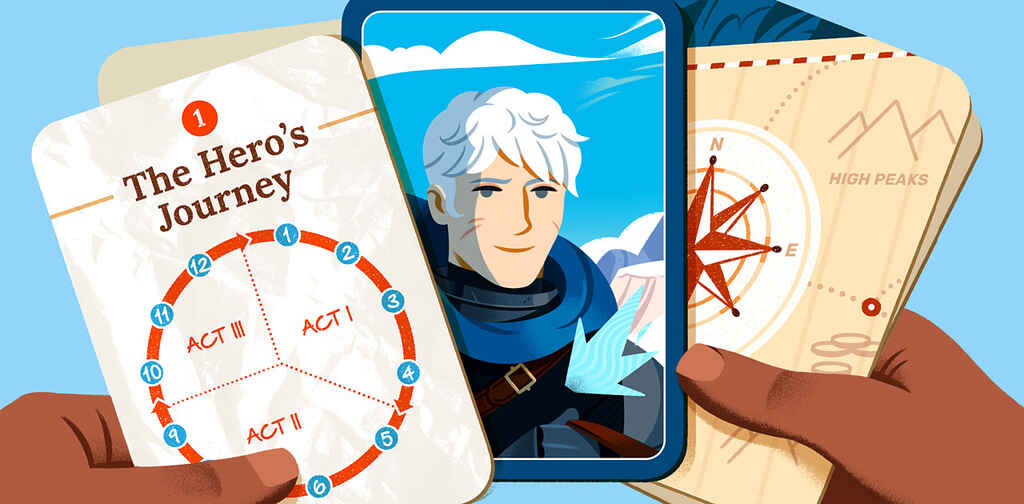
FREE RESOURCE
Hero's Journey Template
Plot your character's journey with our step-by-step template.
What is the Hero’s Journey?
The Hero's Journey, also known as the monomyth, is a story structure where a hero goes on a quest or adventure to achieve a goal, and has to overcome obstacles and fears, before ultimately returning home transformed.
This narrative arc has been present in various forms across cultures for centuries, if not longer, but gained popularity through Joseph Campbell's mythology book, The Hero with a Thousand Faces . While Campbell identified 17 story beats in his monomyth definition, this post will concentrate on a 12-step framework popularized in 2007 by screenwriter Christopher Vogler in his book The Writer’s Journey .
The 12 Steps of the Hero’s Journey

The Hero's Journey is a model for both plot points and character development : as the Hero traverses the world, they'll undergo inner and outer transformation at each stage of the journey. The 12 steps of the hero's journey are:
- The Ordinary World. We meet our hero.
- Call to Adventure. Will they meet the challenge?
- Refusal of the Call. They resist the adventure.
- Meeting the Mentor. A teacher arrives.
- Crossing the First Threshold. The hero leaves their comfort zone.
- Tests, Allies, Enemies. Making friends and facing roadblocks.
- Approach to the Inmost Cave. Getting closer to our goal.
- Ordeal. The hero’s biggest test yet!
- Reward (Seizing the Sword). Light at the end of the tunnel
- The Road Back. We aren’t safe yet.
- Resurrection. The final hurdle is reached.
- Return with the Elixir. The hero heads home, triumphant.
Believe it or not, this story structure also applies across mediums and genres (and also works when your protagonist is an anti-hero! ). Let's dive into it.
1. Ordinary World
In which we meet our Hero.
The journey has yet to start. Before our Hero discovers a strange new world, we must first understand the status quo: their ordinary, mundane reality.
It’s up to this opening leg to set the stage, introducing the Hero to readers. Importantly, it lets readers identify with the Hero as a “normal” person in a “normal” setting, before the journey begins.
2. Call to Adventure
In which an adventure starts.
The call to adventure is all about booting the Hero out of their comfort zone. In this stage, they are generally confronted with a problem or challenge they can't ignore. This catalyst can take many forms, as Campbell points out in Hero with a Thousand Faces . The Hero can, for instance:
- Decide to go forth of their own volition;
- Theseus upon arriving in Athens.
- Be sent abroad by a benign or malignant agent;
- Odysseus setting off on his ship in The Odyssey .
- Stumble upon the adventure as a result of a mere blunder;
- Dorothy when she’s swept up in a tornado in The Wizard of Oz .
- Be casually strolling when some passing phenomenon catches the wandering eye and lures one away from the frequented paths of man.
- Elliot in E.T. upon discovering a lost alien in the tool shed.
The stakes of the adventure and the Hero's goals become clear. The only question: will he rise to the challenge?

3. Refusal of the Call
In which the Hero digs in their feet.
Great, so the Hero’s received their summons. Now they’re all set to be whisked off to defeat evil, right?
Not so fast. The Hero might first refuse the call to action. It’s risky and there are perils — like spiders, trolls, or perhaps a creepy uncle waiting back at Pride Rock . It’s enough to give anyone pause.
In Star Wars , for instance, Luke Skywalker initially refuses to join Obi-Wan on his mission to rescue the princess. It’s only when he discovers that his aunt and uncle have been killed by stormtroopers that he changes his mind.
4. Meeting the Mentor
In which the Hero acquires a personal trainer.
The Hero's decided to go on the adventure — but they’re not ready to spread their wings yet. They're much too inexperienced at this point and we don't want them to do a fabulous belly-flop off the cliff.
Enter the mentor: someone who helps the Hero, so that they don't make a total fool of themselves (or get themselves killed). The mentor provides practical training, profound wisdom, a kick up the posterior, or something abstract like grit and self-confidence.

Wise old wizards seem to like being mentors. But mentors take many forms, from witches to hermits and suburban karate instructors. They might literally give weapons to prepare for the trials ahead, like Q in the James Bond series. Or perhaps the mentor is an object, such as a map. In all cases, they prepare the Hero for the next step.

GET ACCOUNTABILITY
Meet writing coaches on Reedsy
Industry insiders can help you hone your craft, finish your draft, and get published.
5. Crossing the First Threshold
In which the Hero enters the other world in earnest.
Now the Hero is ready — and committed — to the journey. This marks the end of the Departure stage and is when the adventure really kicks into the next gear. As Vogler writes: “This is the moment that the balloon goes up, the ship sails, the romance begins, the wagon gets rolling.”
From this point on, there’s no turning back.
Like our Hero, you should think of this stage as a checkpoint for your story. Pause and re-assess your bearings before you continue into unfamiliar territory. Have you:
- Launched the central conflict? If not, here’s a post on types of conflict to help you out.
- Established the theme of your book? If not, check out this post that’s all about creating theme and motifs .
- Made headway into your character development? If not, this character profile template may be useful:

Reedsy’s Character Profile Template
A story is only as strong as its characters. Fill this out to develop yours.
6. Tests, Allies, Enemies
In which the Hero faces new challenges and gets a squad.
When we step into the Special World, we notice a definite shift. The Hero might be discombobulated by this unfamiliar reality and its new rules. This is generally one of the longest stages in the story , as our protagonist gets to grips with this new world.
This makes a prime hunting ground for the series of tests to pass! Luckily, there are many ways for the Hero to get into trouble:
- In Jumanji: Welcome to the Jungle , Spencer, Bethany, “Fridge,” and Martha get off to a bad start when they bump into a herd of bloodthirsty hippos.
- In his first few months at Hogwarts, Harry Potter manages to fight a troll, almost fall from a broomstick and die, and get horribly lost in the Forbidden Forest.
- Marlin and Dory encounter three “reformed” sharks, get shocked by jellyfish, and are swallowed by a blue whale en route to finding Nemo.

This stage often expands the cast of characters. Once the protagonist is in the Special World, he will meet allies and enemies — or foes that turn out to be friends and vice versa. He will learn a new set of rules from them. Saloons and seedy bars are popular places for these transactions, as Vogler points out (so long as the Hero survives them).
7. Approach to the Inmost Cave
In which the Hero gets closer to his goal.
This isn’t a physical cave. Instead, the “inmost cave” refers to the most dangerous spot in the other realm — whether that’s the villain’s chambers, the lair of the fearsome dragon, or the Death Star. Almost always, it is where the ultimate goal of the quest is located.
Note that the protagonist hasn’t entered the Inmost Cave just yet. This stage is all about the approach to it. It covers all the prep work that's needed in order to defeat the villain.
In which the Hero faces his biggest test of all thus far.
Of all the tests the Hero has faced, none have made them hit rock bottom — until now. Vogler describes this phase as a “black moment.” Campbell refers to it as the “belly of the whale.” Both indicate some grim news for the Hero.
The protagonist must now confront their greatest fear. If they survive it, they will emerge transformed. This is a critical moment in the story, as Vogler explains that it will “inform every decision that the Hero makes from this point forward.”
The Ordeal is sometimes not the climax of the story. There’s more to come. But you can think of it as the main event of the second act — the one in which the Hero actually earns the title of “Hero.”
9. Reward (Seizing the Sword)
In which the Hero sees light at the end of the tunnel.
Our Hero’s been through a lot. However, the fruits of their labor are now at hand — if they can just reach out and grab them! The “reward” is the object or knowledge the Hero has fought throughout the entire journey to hold.
Once the protagonist has it in their possession, it generally has greater ramifications for the story. Vogler offers a few examples of it in action:
- Luke rescues Princess Leia and captures the plans of the Death Star — keys to defeating Darth Vader.
- Dorothy escapes from the Wicked Witch’s castle with the broomstick and the ruby slippers — keys to getting back home.

10. The Road Back
In which the light at the end of the tunnel might be a little further than the Hero thought.
The story's not over just yet, as this phase marks the beginning of Act Three. Now that he's seized the reward, the Hero tries to return to the Ordinary World, but more dangers (inconveniently) arise on the road back from the Inmost Cave.
More precisely, the Hero must deal with the consequences and aftermath of the previous act: the dragon, enraged by the Hero who’s just stolen a treasure from under his nose, starts the hunt. Or perhaps the opposing army gathers to pursue the Hero across a crowded battlefield. All further obstacles for the Hero, who must face them down before they can return home.
11. Resurrection
In which the last test is met.
Here is the true climax of the story. Everything that happened prior to this stage culminates in a crowning test for the Hero, as the Dark Side gets one last chance to triumph over the Hero.
Vogler refers to this as a “final exam” for the Hero — they must be “tested once more to see if they have really learned the lessons of the Ordeal.” It’s in this Final Battle that the protagonist goes through one more “resurrection.” As a result, this is where you’ll get most of your miraculous near-death escapes, à la James Bond's dashing deliverances. If the Hero survives, they can start looking forward to a sweet ending.
12. Return with the Elixir
In which our Hero has a triumphant homecoming.
Finally, the Hero gets to return home. However, they go back a different person than when they started out: they’ve grown and matured as a result of the journey they’ve taken.
But we’ve got to see them bring home the bacon, right? That’s why the protagonist must return with the “Elixir,” or the prize won during the journey, whether that’s an object or knowledge and insight gained.
Of course, it’s possible for a story to end on an Elixir-less note — but then the Hero would be doomed to repeat the entire adventure.
Examples of The Hero’s Journey in Action
To better understand this story template beyond the typical sword-and-sorcery genre, let's analyze three examples, from both screenplay and literature, and examine how they implement each of the twelve steps.
The 1976 film Rocky is acclaimed as one of the most iconic sports films because of Stallone’s performance and the heroic journey his character embarks on.

- Ordinary World. Rocky Balboa is a mediocre boxer and loan collector — just doing his best to live day-to-day in a poor part of Philadelphia.
- Call to Adventure. Heavyweight champ Apollo Creed decides to make a big fight interesting by giving a no-name loser a chance to challenge him. That loser: Rocky Balboa.
- Refusal of the Call. Rocky says, “Thanks, but no thanks,” given that he has no trainer and is incredibly out of shape.
- Meeting the Mentor. In steps former boxer Mickey “Mighty Mick” Goldmill, who sees potential in Rocky and starts training him physically and mentally for the fight.
- Crossing the First Threshold. Rocky crosses the threshold of no return when he accepts the fight on live TV, and 一 in parallel 一 when he crosses the threshold into his love interest Adrian’s house and asks her out on a date.
- Tests, Allies, Enemies. Rocky continues to try and win Adrian over and maintains a dubious friendship with her brother, Paulie, who provides him with raw meat to train with.
- Approach to the Inmost Cave. The Inmost Cave in Rocky is Rocky’s own mind. He fears that he’ll never amount to anything — something that he reveals when he butts heads with his trainer, Mickey, in his apartment.
- Ordeal. The start of the training montage marks the beginning of Rocky’s Ordeal. He pushes through it until he glimpses hope ahead while running up the museum steps.
- Reward (Seizing the Sword). Rocky's reward is the restoration of his self-belief, as he recognizes he can try to “go the distance” with Apollo Creed and prove he's more than "just another bum from the neighborhood."
- The Road Back. On New Year's Day, the fight takes place. Rocky capitalizes on Creed's overconfidence to start strong, yet Apollo makes a comeback, resulting in a balanced match.
- Resurrection. The fight inflicts multiple injuries and pushes both men to the brink of exhaustion, with Rocky being knocked down numerous times. But he consistently rises to his feet, enduring through 15 grueling rounds.
- Return with the Elixir. Rocky loses the fight — but it doesn’t matter. He’s won back his confidence and he’s got Adrian, who tells him that she loves him.
Moving outside of the ring, let’s see how this story structure holds on a completely different planet and with a character in complete isolation.
The Martian
In Andy Weir’s self-published bestseller (better known for its big screen adaptation) we follow astronaut Mark Watney as he endures the challenges of surviving on Mars and working out a way to get back home.

- The Ordinary World. Botanist Mark and other astronauts are on a mission on Mars to study the planet and gather samples. They live harmoniously in a structure known as "the Hab.”
- Call to Adventure. The mission is scrapped due to a violent dust storm. As they rush to launch, Mark is flung out of sight and the team believes him to be dead. He is, however, very much alive — stranded on Mars with no way of communicating with anyone back home.
- Refusal of the Call. With limited supplies and grim odds of survival, Mark concludes that he will likely perish on the desolate planet.
- Meeting the Mentor. Thanks to his resourcefulness and scientific knowledge he starts to figure out how to survive until the next Mars mission arrives.
- Crossing the First Threshold. Mark crosses the mental threshold of even trying to survive 一 he successfully creates a greenhouse to cultivate a potato crop, creating a food supply that will last long enough.
- Tests, Allies, Enemies. Loneliness and other difficulties test his spirit, pushing him to establish contact with Earth and the people at NASA, who devise a plan to help.
- Approach to the Inmost Cave. Mark faces starvation once again after an explosion destroys his potato crop.
- Ordeal. A NASA rocket destined to deliver supplies to Mark disintegrates after liftoff and all hope seems lost.
- Reward (Seizing the Sword). Mark’s efforts to survive are rewarded with a new possibility to leave the planet. His team 一 now aware that he’s alive 一 defies orders from NASA and heads back to Mars to rescue their comrade.
- The Road Back. Executing the new plan is immensely difficult 一 Mark has to travel far to locate the spaceship for his escape, and almost dies along the way.
- Resurrection. Mark is unable to get close enough to his teammates' ship but finds a way to propel himself in empty space towards them, and gets aboard safely.
- Return with the Elixir. Now a survival instructor for aspiring astronauts, Mark teaches students that space is indifferent and that survival hinges on solving one problem after another, as well as the importance of other people’s help.
Coming back to Earth, let’s now examine a heroine’s journey through the wilderness of the Pacific Crest Trail and her… humanity.
The memoir Wild narrates the three-month-long hiking adventure of Cheryl Strayed across the Pacific coast, as she grapples with her turbulent past and rediscovers her inner strength.

- The Ordinary World. Cheryl shares her strong bond with her mother who was her strength during a tough childhood with an abusive father.
- Call to Adventure. As her mother succumbs to lung cancer, Cheryl faces the heart-wrenching reality to confront life's challenges on her own.
- Refusal of the Call. Cheryl spirals down into a destructive path of substance abuse and infidelity, which leads to hit rock bottom with a divorce and unwanted pregnancy.
- Meeting the Mentor. Her best friend Lisa supports her during her darkest time. One day she notices the Pacific Trail guidebook, which gives her hope to find her way back to her inner strength.
- Crossing the First Threshold. She quits her job, sells her belongings, and visits her mother’s grave before traveling to Mojave, where the trek begins.
- Tests, Allies, Enemies. Cheryl is tested by her heavy bag, blisters, rattlesnakes, and exhaustion, but many strangers help her along the trail with a warm meal or hiking tips.
- Approach to the Inmost Cave. As Cheryl goes through particularly tough and snowy parts of the trail her emotional baggage starts to catch up with her.
- Ordeal. She inadvertently drops one of her shoes off a cliff, and the incident unearths the helplessness she's been evading since her mother's passing.
- Reward (Seizing the Sword). Cheryl soldiers on, trekking an impressive 50 miles in duct-taped sandals before finally securing a new pair of shoes. This small victory amplifies her self-confidence.
- The Road Back. On the last stretch, she battles thirst, sketchy hunters, and a storm, but more importantly, she revisits her most poignant and painful memories.
- Resurrection. Cheryl forgives herself for damaging her marriage and her sense of worth, owning up to her mistakes. A pivotal moment happens at Crater Lake, where she lets go of her frustration at her mother for passing away.
- Return with the Elixir. Cheryl reaches the Bridge of the Gods and completes the trail. She has found her inner strength and determination for life's next steps.
There are countless other stories that could align with this template, but it's not always the perfect fit. So, let's look into when authors should consider it or not.
When should writers use The Hero’s Journey?

The Hero’s Journey is just one way to outline a novel and dissect a plot. For more longstanding theories on the topic, you can go this way to read about the ever-popular Three-Act Structure or here to discover Dan Harmon's Story Circle and three more prevalent structures .
So when is it best to use the Hero’s Journey? There are a couple of circumstances which might make this a good choice.
When you need more specific story guidance than simple structures can offer
Simply put, the Hero’s Journey structure is far more detailed and closely defined than other story structure theories. If you want a fairly specific framework for your work than a thee-act structure, the Hero’s Journey can be a great place to start.
Of course, rules are made to be broken . There’s plenty of room to play within the confines of the Hero’s Journey, despite it appearing fairly prescriptive at first glance. Do you want to experiment with an abbreviated “Resurrection” stage, as J.K. Rowling did in Harry Potter and the Sorcerer’s Stone? Are you more interested in exploring the journey of an anti-hero? It’s all possible.
Once you understand the basics of this universal story structure, you can use and bend it in ways that disrupt reader expectations.
Need more help developing your book? Try this template on for size:
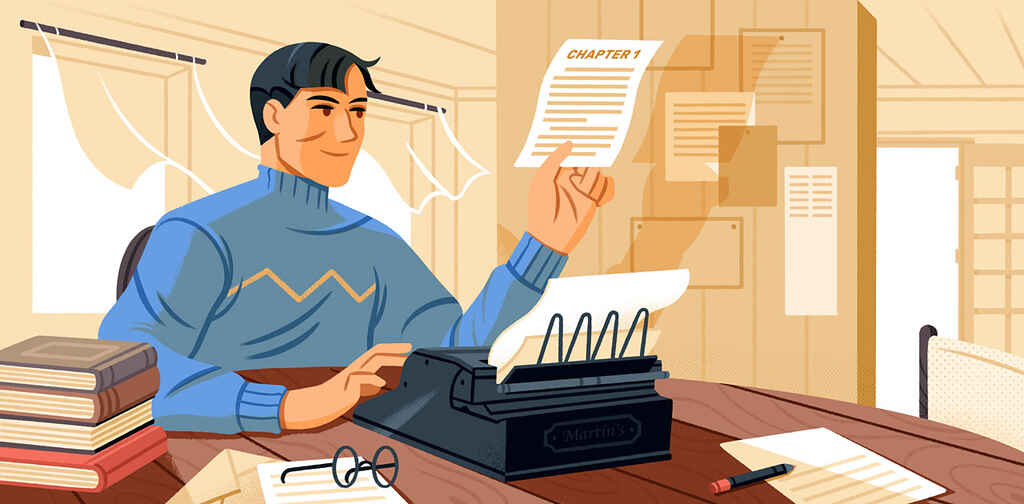
Get our Book Development Template
Use this template to go from a vague idea to a solid plan for a first draft.
When your focus is on a single protagonist
No matter how sprawling or epic the world you’re writing is, if your story is, at its core, focused on a single character’s journey, then this is a good story structure for you. It’s kind of in the name! If you’re dealing with an entire ensemble, the Hero’s Journey may not give you the scope to explore all of your characters’ plots and subplot — a broader three-act structure may give you more freedom to weave a greater number story threads.
Which story structure is right for you?
Take this quiz and we'll match your story to a structure in minutes!
Whether you're a reader or writer, we hope our guide has helped you understand this universal story arc. Want to know more about story structure? We explain 6 more in our guide — read on!
6 responses
PJ Reece says:
25/07/2018 – 19:41
Nice vid, good intro to story structure. Typically, though, the 'hero's journey' misses the all-important point of the Act II crisis. There, where the hero faces his/her/its existential crisis, they must DIE. The old character is largely destroyed -- which is the absolute pre-condition to 'waking up' to what must be done. It's not more clever thinking; it's not thinking at all. Its SEEING. So many writing texts miss this point. It's tantamount to a religions experience, and nobody grows up without it. STORY STRUCTURE TO DIE FOR examines this dramatic necessity.
↪️ C.T. Cheek replied:
13/11/2019 – 21:01
Okay, but wouldn't the Act II crisis find itself in the Ordeal? The Hero is tested and arguably looses his/her/its past-self for the new one. Typically, the Hero is not fully "reborn" until the Resurrection, in which they defeat the hypothetical dragon and overcome the conflict of the story. It's kind of this process of rebirth beginning in the earlier sections of the Hero's Journey and ending in the Resurrection and affirmed in the Return with the Elixir.
Lexi Mize says:
25/07/2018 – 22:33
Great article. Odd how one can take nearly every story and somewhat plug it into such a pattern.
Bailey Koch says:
11/06/2019 – 02:16
This was totally lit fam!!!!
↪️ Bailey Koch replied:
11/09/2019 – 03:46
where is my dad?
Frank says:
12/04/2020 – 12:40
Great article, thanks! :) But Vogler didn't expand Campbell's theory. Campbell had seventeen stages, not twelve.
Comments are currently closed.
Join a community of over 1 million authors
Reedsy is more than just a blog. Become a member today to discover how we can help you publish a beautiful book.
Bring your stories to life
Our free writing app lets you set writing goals and track your progress, so you can finally write that book!

1 million authors trust the professionals on Reedsy. Come meet them.
Enter your email or get started with a social account:
The Hero’s Journey: Explained in 12 Steps
This article explains the hero’s journey, where it came from, and how it can help you tell better stories.
Would you like a proven way of telling better stories, ones that readers remember long after they put your work down? Well, you don’t need to sell your soul to do it either. Instead, use the Hero’s Journey to master the art of storytelling .
It’s a heroic journey that the storytellers behind popular dramas, stories, myths, legends, and even religious rituals often use it.
Living Writer contains time-saving templates for authors and novelists. iOS and Android apps available

What Is The Hero’s Journey?
Stage 1. the ordinary world, stage 2. the call to adventure, stage 3. refusal of the call, stage 4. meeting with the mentor, stage 5. crossing the first threshold, stage 6. test, allies, and enemies, stage 7. approach to the inmost cave, stage 8: the ordeal, stage 9. the reward (seizing the sword), stage 10. the road back, stage 11. the resurrection, stage 12. return with the elixir, what the hero’s journey means for writers, the hero’s journey: the final word, why is the hero’s journey important, what is the purpose of the hero’s journey, storytelling resources.
The Hero’s Journey is a popular storytelling framework used in films like Star Wars, The Matrix , Toy Story, and the recent Marvel superhero films. Although it’s in vogue today, it’s a rather old form of story structure.
In the 1949 book The Hero With a Thousand Faces, scholar Joseph writes about the Hero’s Journey:
“The usual hero adventure begins with someone from whom something has been taken, or who feels there is something lacking in the normal experience available or permitted to the members of society.”
“The person then takes off on a series of adventures beyond the ordinary, either to recover what has been lost or to discover some life-giving elixir. It’s usually a cycle, a coming and a returning.”
Essentially, the hero (it could be you or your protagonist) of any story goes on a journey and comes back a changed person. Star Wars is one of the most popular stories of the modern era, but did you know George Lucas guided his story for the first film around using the twelves stages of the Hero’sJourney?
Let’s dive into this storytelling technique using examples from Star Wars and other popular films.
We meet our hero.
Here, the reader or viewer meets an uneasy, ordinary person going about their daily lives and sympathizes with the unlikely hero.
For example:
In Star Wars , we meet Luke living a bored and isolated life on Tatooine’s backwater desert planet. He is an ordinary man with ordinary problems.
Similarly, in Lord of the Rings , we meet Frodo and his friends living a care-free life in the Shire.

Our hero goes on an adventure.
A dramatic incident calls the hero on a dangerous path and leaves the known world behind. He may encounter and disbelieve fabulous forces.
In Star Wars , Luke cleans an old droid called R2D2 and accidentally plays a help message from Princess Leia.
So, he seeks out an old hermit Obi-Wan Kenobi to help him understand what this message means. His world is about to change.
In Lord of the Rings , Gandalf visits Frodo Baggins and sends him on a mysterious adventure: to carry a magic ring to Rivendell.
In Toy Story, this is the moment Woody leaves Andy’s bedroom’s safety, albeit accidentally.
Our hero wants to turn back and go home.
The hero catches a glimpse of a new unknown world. An archetypal hero becomes reluctant and afraid to embrace this call to adventure.
In Star Wars , Obi-Wan Kenobi tells Luke about the age-long struggle between the evil Empire and the Rebels. Then, he says he will bring Luke to Alderaan and train him in the ways of the Force.
In Lord of the Rings , Frodo travels to Rivendell, meets Elrond, and learns the ring must be destroyed. The council immediately begin fighting with each other over what to do next.
Our hero meets a more knowledgeable teacher or guide.
The hero meets a seasoned traveler of the world and receives training and equipment from him or her.
In Star Wars , Luke meets Obi-Wan Kenobi. He offers Luke his father’s old light-saber and promises to train him in the mysterious ways of the Force.
In the recent Spiderman films , the hero meets Ironman and gains a special suit, which gives him new powers.
Our hero leaves his or her old life behind.
This moment comes at the end of the first act of the story. Here, the hero finally leaves his or her ordinary world and enters the other or unknown world.
In Star Wars , Luke returns home to find his aunt and uncle are dead. Having nowhere to go, he accepts Obi-Wan’s call to adventure and goes on a quest to rescue Princess Leia.
In The Matrix , Neo accepts the red pill from his mentor Morpheus. He swallows the red pill and learns the truth about the ordinary world.
Our hero assembles a crew.
Here, the hero is tested by his enemies and recruits some friends who can help him.
In Star Wars , Luke and Obi-Wan recruit a reluctant Han Solo and Chewbacca. Then, they battle against the Empire’s stormtroopers.
In almost any Marvel movie, our hero assembles side-kicks and friends who will help him or her.
Our hero gets ready to do battle.
Now, the hero and his or her allies get ready to achieve their goal. They prepare to do battle against the antagonists of the story.
The inmost cave is a metaphor deployed by mythologist Joseph Campbell describing an imminent conflict.
In Star Wars , Luke and his new allies travel to the planet of Alderaan so Luke can train in the ways of the Force and prepare to rescue Princess Leia.
Our hero faces their greatest challenge or ordeal yet.
In this pivotal moment of the story, the hero confronts death, his or her greatest fear, or a traumatic experience. It occurs in the innermost cave of the myth in question.
Also described by Campbell as entering “the belly of the whale,” it’s their biggest test so far. If they overcome this challenge, they will fundamentally change at a great cost. If they fail, all is lost.
In Star Wars , this is the moment where Darth Vadar and Obi-Wan Kenobi attack each other with light-sabers inside the Death Star. Luke looks on helplessly while Vadar strikes down and kills his mentor.
All is lost for Obi-Wan Kenobi. Later on, in the trilogy, Luke faces and defeats his father. All is won.
Our hero, if successful, receives a prize.
The hero, after facing and escaping certain death, takes possession of a treasure. He achieves a decisive victory over his enemies.
In Star Wars , Luke saves Princess Leia and captures the plans for the Death Star. Now, the Rebels have what they need to defeat the Empire finally.
Or do they?
Our hero tries to return with this prize to their old life.
Typically, there is a chase whereby the hero is driven to complete his adventure and bring his or her treasure home.
In Star Wars , Luke rescues Princess Leia from Darth Vadar with Han Solo and Chewbacca’s help. He joins the Rebels on their hidden base on Yavin 4. There, he is accepted as an X-Wing fighter pilot.
There, they regroup and plan an attack against Vadar’s forces and the Death Star.
Wait! Our hero has one final test, battle, or challenge.
Here, the hero is tested one last time and must make a sacrifice before he or she can defeat the primary antagonist.
Luke attempts to destroy the Death Star and is almost shot down and killed by Darth Vadar, flying a TIE Fighter.
All looks lost for Luke… until his old mentor appears in a vision, tells Luke to turn off the sensors of his X-Wing, and “Use the Force.”
In the final Lord of the Rings film, this is the moment when Frodo is about to die before being rescued by the Eagles.
Our hero returns home at last.
The hero returns home or continues with his journey, having embraced his identity and carrying some element of the treasure.
Luke uses the Force to destroy the Death Star and returns to the Rebels a hero. He will continue to fight the Empire using the Force on his side.
In the first Matrix film, Neo defeats Smith and leaves the Matrix before an electromagnetic pulse destroys the Sentinels.
He then phones Smith and reveals he will show those trapped in Matrix “a world where anything is possible.”
In Lord of the Rings, Bilbo returns to the Shire with treasure and a new understanding of the ordinary world.
I like the Hero’s Journey, not just because I enjoy superhero films or Star Wars , but because it’s a narrative device that a writer can tell more powerful stories .
Listen to what George Lucas said about the Hero’s Journey:
“Here is a lifetime of scholarship, a life of work that is distilled down to a few books that I can read in a few months that enable me to move forward with what I am trying to do and give me focus to my work.”
“It was a great feat and very important. It’s possible that if I had not run across him I would still be writing Star Wars today.”
He’s not the only successful creative person to use Hero’s Journey to tell better stories .
From the Matrix to almost all the recent Marvel offerings, the filmmakers behind popular franchises tell their stories using variations of the Hero’s Journey, as do the writers of popular thriller stories.
So what does the Hero’s Journey storytelling technique mean for you?
Well, you can…
Look for traces of the Hero’s Journey in popular works: Now that you’re aware of it, it’s easy (and fun) to find elements of this narrative device in books, films, and stories.
Use the Hero’s Journey to find creative ideas: Once you understand how a popular story is put together, you can extract elements from this story and combine them with your own to come up with more creative ideas.
Use the Hero’s Journey to overcome writer’s block: It’s not a color-by-numbers template that you must rigidly follow, but it will help you break your writing (or stories) into smaller, more approachable sections, like the opening , the middle, or the ending .
Tell stories with the Hero’s Journey: Whether you write short stories , novels, or non-fiction works, storytelling is an art that demands practice. The good news is the Hero’s Journey offers a proven way of practicing storytelling.
Remix this storytelling technique: George Lucas played with the Hero’s Journey’s order to tell his story in the first Star Wars film. There’s no reason why you can’t play around with it to tell your stories too.
Remember, the Hero’s Journey is just one way of mastering the art of storytelling. There are dozens more out there.
You have to accept your call-to-adventure and find them.
The hero’s journey is a popular form of storytelling, particularly with today’s screenwriters. It also works well for novels and even non-fiction.
Work through these 12 steps the next time you outline a book or story. Understanding the rules and mythology of this framework and see where your plot takes you.
Hero’s Journey FAQs
The hero’s journey demonstrates that change is possible for everyone. It shows us that an ordinary person can overcome great adversity and defeat their enemies or fears. With some help, they can affect the world in some way. It’s also important as it explains how popular stories and myths work.
The hero’s journey is a framework for crafting a compelling story. It charts the heroic journey of an ordinary person or main character to becoming a hero. It’s used in many popular mythical stories like Star Wars and Toy Story.
A Storytelling Guide: Step-By-Step, With Examples
First vs Third Person Point of View: What Makes Sense for Your Story?
How to Write a Story Outline that Works: 9 Steps
The 11 Best Story Writing Apps for This Year
The Inciting Incident: 7 Tips For Starting Your Story With A Bang
Synopsis Example: How To Write A Winning Summary Of Your Story
Allegory vs Parable: What Are the Differences?
7 Types of Conflict in Literature Worth Exploring
12 Character Archetypes To Drive Your Writing

Bryan Collins is the owner of Become a Writer Today. He's an author from Ireland who helps writers build authority and earn a living from their creative work. He's also a former Forbes columnist and his work has appeared in publications like Lifehacker and Fast Company.
View all posts
ThinkWritten
The Hero’s Journey: A 17 Step Story Structure Beat Sheet
The Hero’s Journey is a classic plot structure made up of 17 steps. Learn how to craft an epic story using the Hero’s Journey story beats.

We may receive a commission when you make a purchase from one of our links for products and services we recommend. As an Amazon Associate we earn from qualifying purchases. Thank you for support!
Sharing is caring!
The Hero’s Journey is a story structure that tells how a hero starts in one place, goes on an adventure into an unknown world, and then returns to what they started with.
This blog post will explain the 17 steps of the Hero’s Journey and share how you can use this common plot structure to write your own story or novel.
What is the Hero’s Journey?
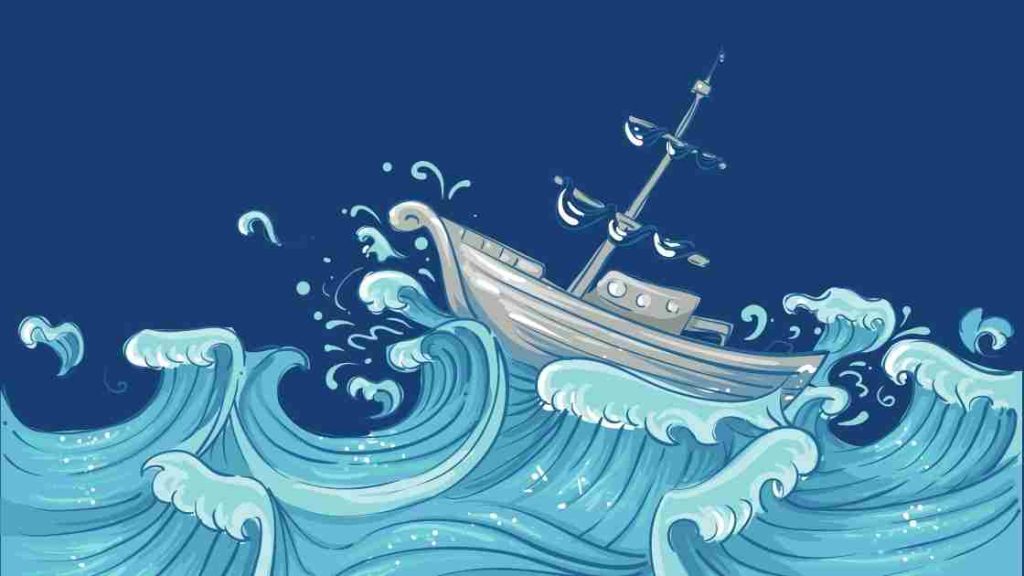
Joseph Campbell first introduced the Hero’s Journey in 1949. It is based on the idea that we can break down most stories into one basic story structure.
The plot structure of the Hero’s Journey is made up of 17 steps, all of which can be excellent guideposts for you when plotting your novel and planning your chapters.
To simplify the 17 steps of the Hero’s Journey, there are 3 main acts of the story: The Departure, The Initiation, and The Return.
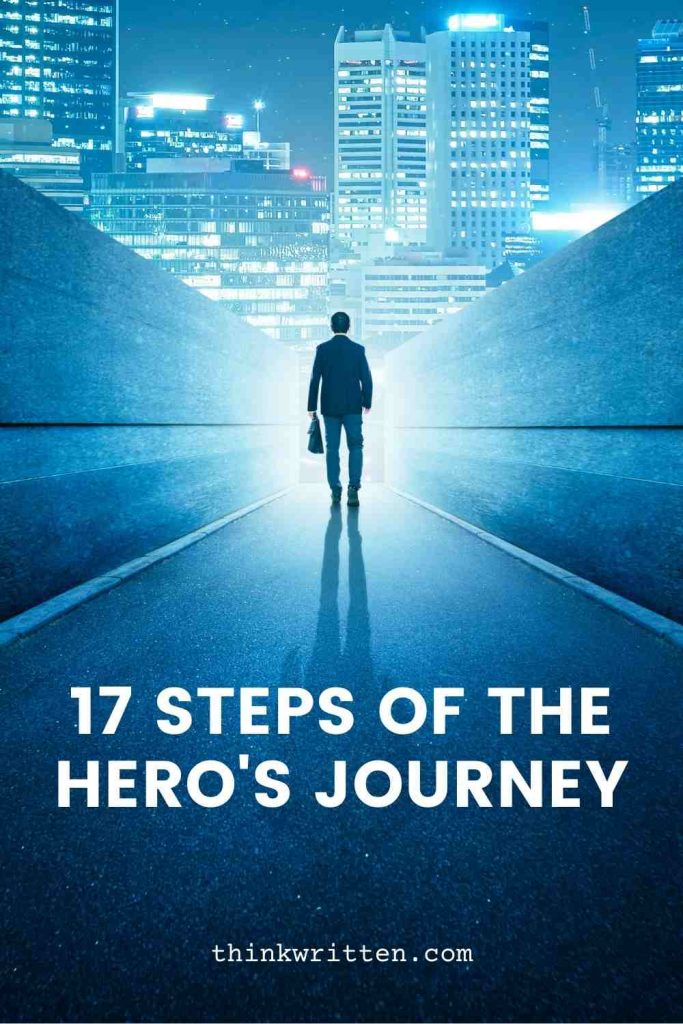
Here’s an overview of all of the 17 steps of Joseph Campbell’s Hero’s Journey:
Act One: The Departure

The Call to Adventure
Refusal of the call, supernatural aid.
- The Crossing of the First Threshold
Belly of the Whale
Act 2: The Initiation :
The Road of Trials
The meeting with the goddess, woman as the temptress, atonement with the father/abyss, the ultimate boon.
Act 3: The Return:
Refusal of the Return
The magic flight, rescue from without, the crossing of the return threshold, master of the two worlds, freedom to live.
In this post, we will cover each step of the Hero’s Journey and what it includes. If you are writing a novel , think of this as the ultimate beat sheet to help you plan and plot your novel !

To understand the 17 steps of the hero’s journey, we will share with you exactly what happens in each step and what it should include. We’ve divided the 17 steps into the three main acts: The Departure, The Initiation, and the Return.
Let’s dive on in, shall we?
The Departure

The Departure (Act 1) of the Hero’s Journey is all about your novel’s main characters and their ordinary lives. You want to show how they live before something happens that throws them into a world outside of what was normal for them.
In a nutshell, The Departure is when we see our heroes start in their current environment and set out on an adventure where they leave their comfort zone.
There are 5 steps of the Departure, each of which can help you base your chapters for your novel. Let’s look at these 5 steps in detail.
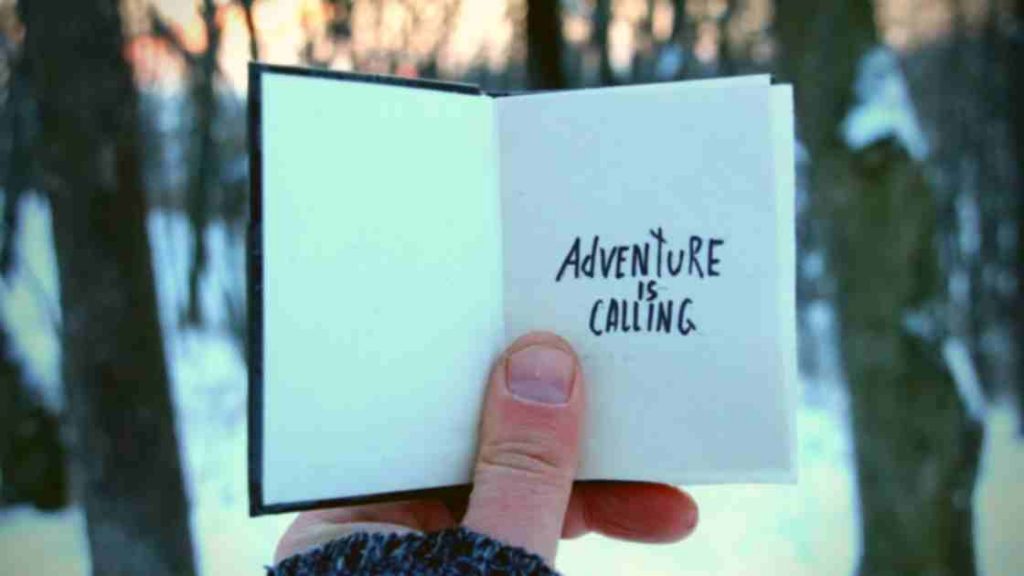
In the first 1 or 2 chapters of our book, our character is introduced and is given the call to adventure. Of course, the call to adventure is what sets our character on their journey. There is a moment when our hero realizes something isn’t right, and it’s time for them to become the hero of their own story.
The Call to Adventure should introduce your main characters and what part of life they are living before things start changing for them. You want this to be a scene that you can use to give your reader an idea of who they are and what their life is like.
The call to adventure is sometimes also called the inciting incident because it often comes from another character or situation in which our hero feels compelled to do something. This could come in the form of a problem or something that they’ve always wanted to accomplish.
Once we understand the character’s life and why they must go on their journey, we move onto the next crucial element: Refusal of the Call.

The Refusal of the Call sounds like it’s a bad thing, but in reality, it can help the hero grow and become more self-sufficient. In this step of the Departure, we see that our character isn’t sure if they are ready for such an adventure.
The refusal of the call is often used as a way for your reader to get more insight into some of your character’s weaknesses. It can also open up the character to seeing what they are missing in their life and get them a little more excited about going after it.
When writing your story, you will show your readers why your hero is reluctant to go on the journey. Why don’t they want to change? What are their fears? This step helps build your character arc, as well as builds some suspense in the story.
You also want to make sure in this step that the refusal of the call is resolved in some way. This can be through another character encouraging your hero or by realizing what they are missing out on if they don’t go on the journey.
Either way, you need to ensure this scene or chapter ends with the hero deciding to accept the challenge.
After your main character decides whether or not they want to go on this journey, we move onto Supernatural Aid.
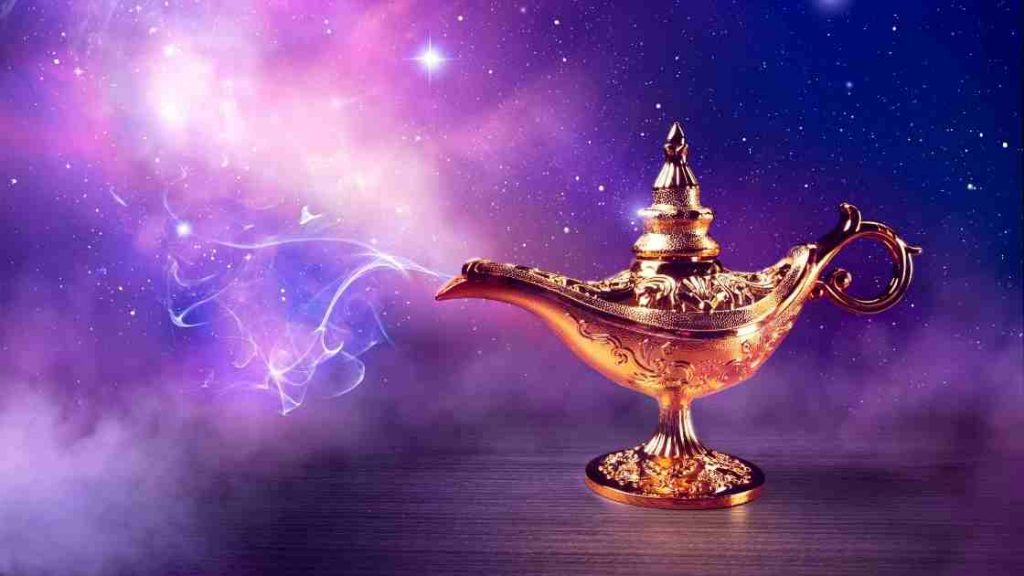
Supernatural aid is the hero’s first experience with a mentor or teacher. While we use the term supernatural here, it does not necessarily have to be some mystical being.
It could be a random stranger giving our hero advice or someone who has been to this magical place before and knows the path. The important thing is this character is someone who will help your protagonist in their journey.
Supernatural aid helps your audience understand there will be obstacles along the way. The hero will need help. You will need a strong supporting character willing to give our main character advice on how they should proceed through their journey.
In this scene, you want to show us why you chose these characters for mentors. What qualities do they possess? Do they have experience with adventures like this? Why can they help the hero, and more importantly, why do they want to help the hero?
Once this person is introduced, we are ready for the next stage of the Hero’s Journey: Crossing the First Threshold.
Crossing the First Threshold
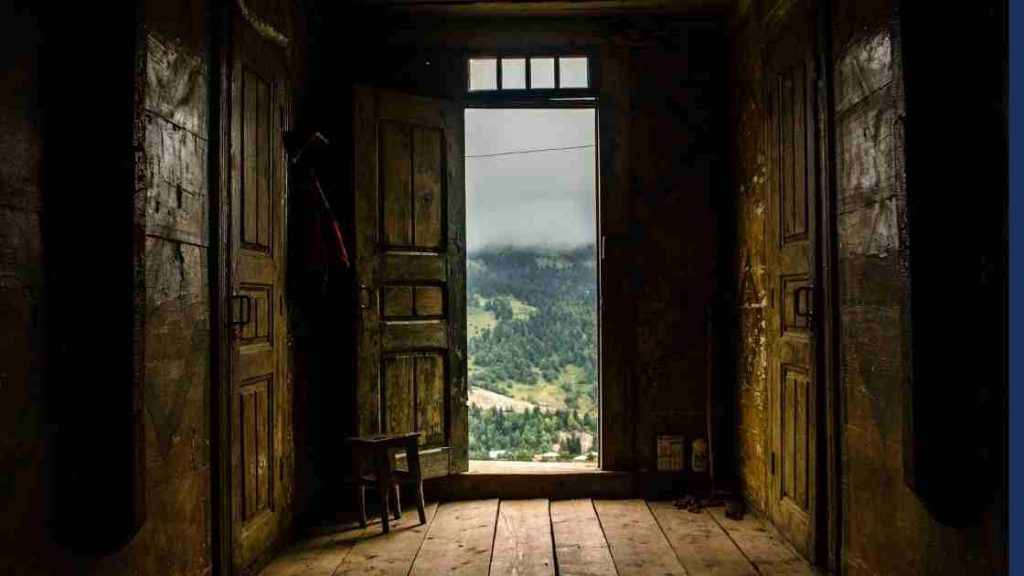
Crossing the first threshold is where your hero commits to going on the journey. They may have made some attempts at it before, but now they are fully committed and ready to go, even if that means leaving their comfort zone behind.
Your character will be doing something different than what they’ve done in the past, or perhaps this act will lead them into a dark and dangerous place.
For example, your hero may leave their home for the first time to go on this journey, or they are finally ready to go and confront someone who has been standing in their way of happiness.
In this 4th step of the Hero’s Journey, you want to show your reader why this is such a big change for the character.
You want to show your character scared and uncertain of what lies ahead for them while still being brave enough to continue on their journey! You don’t need to make this scene too long or spend time explaining every little detail; just put us in the headspace of your hero so we can understand what unknown dangers and fears are ahead.
Once our hero takes their first steps towards danger, we find ourselves in the Belly of the Whale.
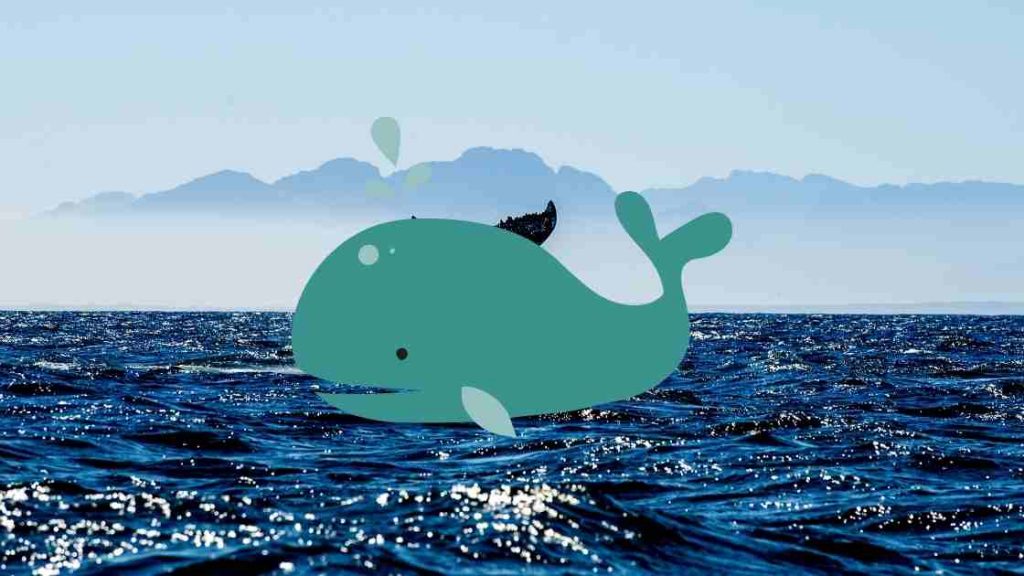
The Belly of the Whale is the last step before the hero breaks away from their normal existence and sense of self. When someone enters this stage, they are showing that they want to change.
A typical element of the Belly of the Whale Scene is displaying a small problem or threat. These problems aren’t the major conflict of the story, but it is enough of an obstacle that we see the hero absolutely cannot go back to where they used to be and must change.
In this scene, it’s common to show a “dark night of the soul.” This is where they feel like everything in their life has been turned upside down, and things seem hopeless. Yet, they must commit to making a change and continuing on their journey in this final step of the Departure stage.
Now that we’ve covered all the steps of the Departure state let’s move onto Act 2: The Initiation.
The Initiation
The second act of our story, the Initiation, is the part where things get interesting. The character is now deeper into their journey and facing new challenges that they must overcome.
Not only are we focusing on our hero’s personal development, but our protagonist’s character traits start to change. They will be showing how they’ve become different from who they were in Act One and developing the traits needed for a successful journey.

The first scene or chapter of the Initiation stage of the Hero’s Journey is The Road of Trials. The Road of Trials is where the protagonist faces a series of tests that your hero must pass to move onto the next stage.
These trials will continue until our hero has shown they are ready for whatever is waiting ahead on their journey and have discovered what lessons they needed to learn along the way.
Usually, there is a series of 3 tests, and your hero will not ace all of them immediately. Sometimes, we will revisit the person introduced as a mentor or guiding force from Act One in these scenes, as the hero will certainly need some support in going through these trials.
In this scene, you want to make sure your reader sees how the hero experiences growth and changes. You want your reader to appreciate how far our hero has come along their journey, but there are still more experiences ahead for them!
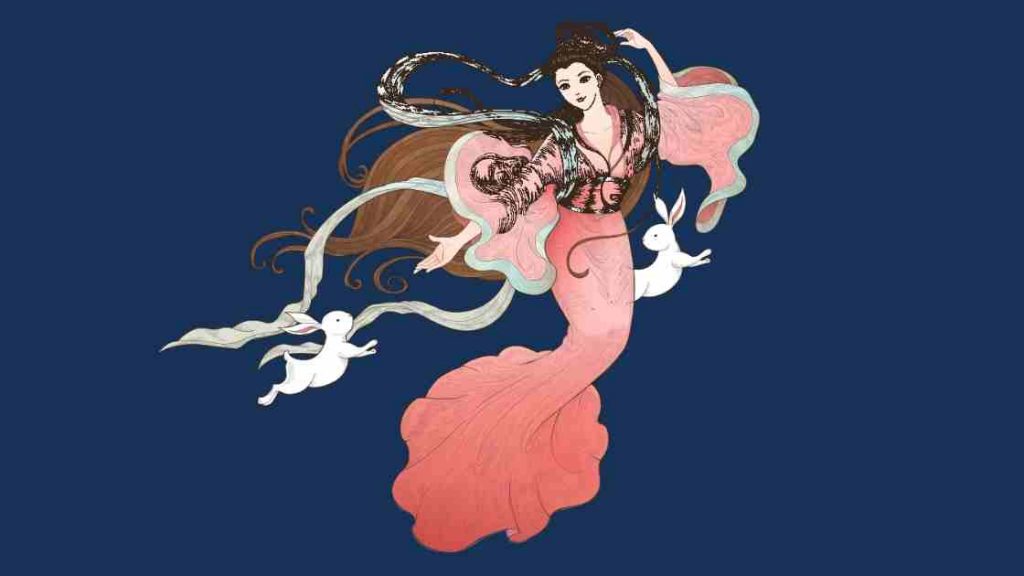
The next step of the Initiation stage is The Meeting with the Goddess/Saviour. This is where we are introduced to someone who will give our protagonist a sense of love, peace, safety, and unity.
This character is essential because they offer our protagonist something he didn’t have before and will be the support that helps them through whatever journey lies ahead. Sometimes they appear as a love interest, but not always.
The Goddess figure is often human but could also be an animal or nature spirit. They are someone who will help your hero become whole again. They are an equal opposite of your hero.
In this scene, we want our hero to feel everything is going to be okay now. They will learn that they don’t need to face their problems alone; someone here with them understands what they are going through.
Of course, this doesn’t last forever as we move into the next chapter: Woman as the Temptress.
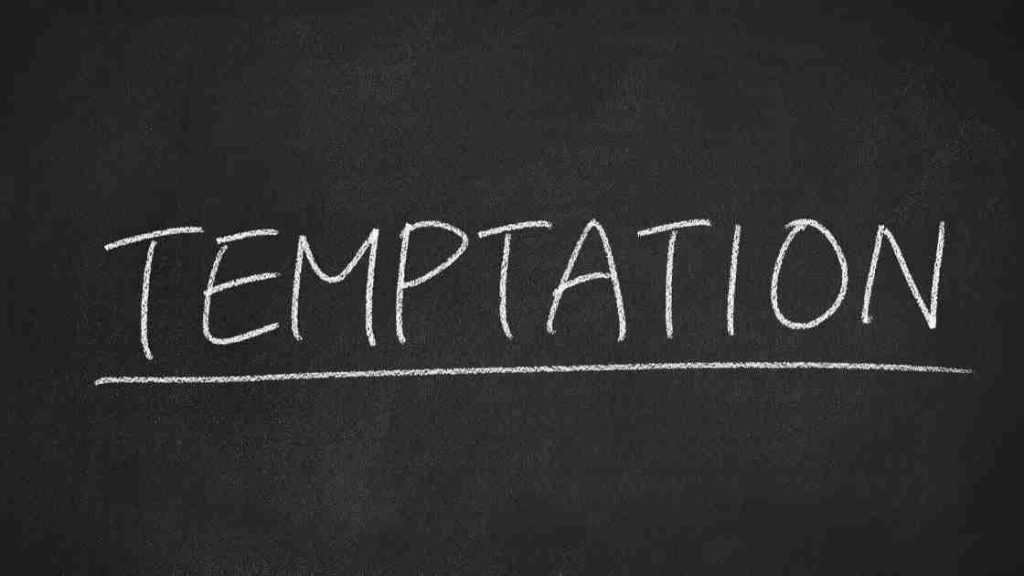
In this next step, the hero faces physical temptations that might cause them to be distracted from their quest. Again, it’s important to understand this does not mean you need to introduce a female character in this scene – the woman is only a metaphorical symbol.
Many things can tempt our heroes to stray from their path. It might be money, power, or fame. It could even be something as simple as food and drink. But, of course, these temptations are not meant actually to distract the protagonist from their path. Our hero must resist them to gain a greater reward at the end of this stage.
Throughout this scene, they may face several such temptations until our hero learns how to resist them and stay focused on what they really want.
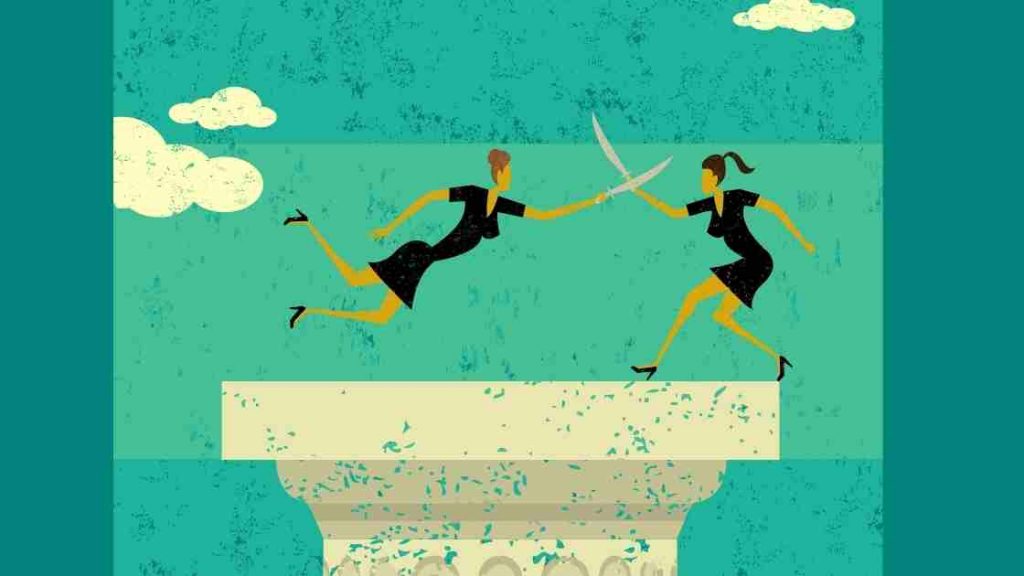
The word Atonement means “reparations for a wrong or injury,” and the Father is a symbol for an authority figure in the hero’s life. Finally, the Abyss represents death or darkness.
In this scene, the hero must confront whatever it is that holds the most power over them. This could be another character or it could even be internal conflict where the hero must come face-to-face with the dark side of their personality and be willing to embrace it.
The goal of this step in the Hero’s Journey is to make your protagonist question their entire being. Only when they confront the most powerful obstacle in their path and reconcile with it can they move forward on their journey.
As with most characters, the father does not have to be an actual father or even a male figure. The important thing is this figure is a person of power and authority over the hero.
There are many ways the hero can reconcile with the father figure – they can defeat this person, win this person’s approval, or reconcile with a part of themselves that is related to the father.
This step is important because it forces your protagonist to face their biggest fears and insecurities. It gives them the opportunity and confidence boost to overcome these obstacles once and for all.
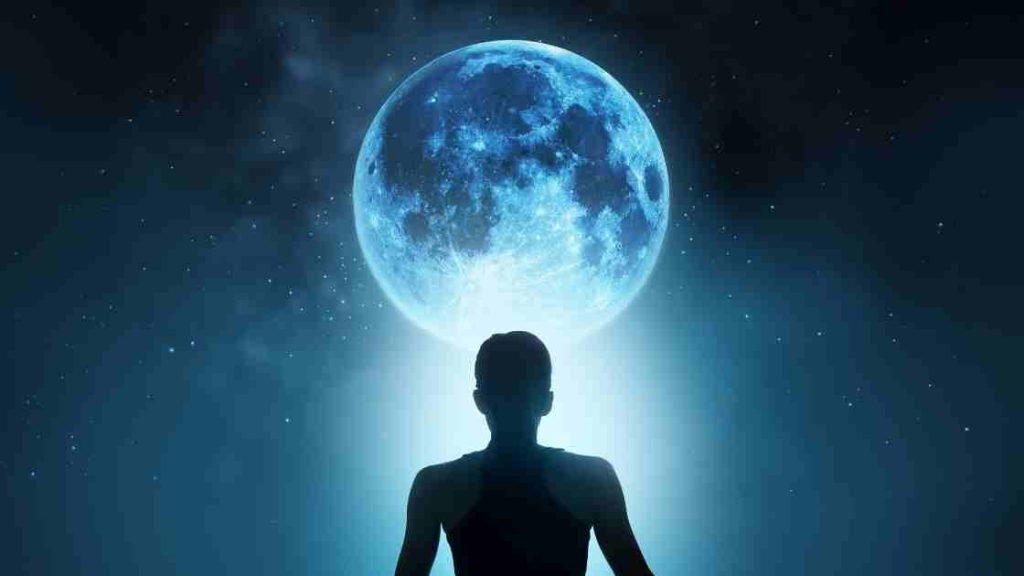
Apotheosis is another word for “the highest point of a person’s spiritual, moral or intellectual development.” It is when the protagonist transcends their humanity and becomes something more than they were before.
In this step of The Hero’s Journey, your protagonist will undergo an important change that brings them closer to being the ideal self they set out to be at the beginning.
In this stage of the Hero’s Journey, our hero learns something new about themselves that prepares them for the hardest part of their journey. This revelation gives them the necessary knowledge to complete their quest.
This step is often referred to as “the answer.” The protagonist will usually gain this new insight from a character who embodies wisdom or spiritual power, such as their mentor figure.
Now that our character has finally grown to where they need to be to accomplish their quest, they are ready for The Ultimate Boon’s next step.

The ultimate boon is the fulfillment of the purpose of the journey. This is when the hero finally achieves what they set out to accomplish.
All of the previous steps of the journey worked to this point to help the hero finally reach their goal.
In mythology, the “boon” is often something otherworldly. It could be the fountain of youth, an ancient scroll with sacred information, or a magical potion.
There are many ways to play out this step of The Hero’s Journey, so your character’s end goal will determine what the boon is.
This step of The Hero’s Journey often includes a battle with something that opposes your protagonist, such as an enemy or villain.
Our heroes might have to face their own dark side to achieve this final prize and complete their journey successfully. This could cause them to question whether or not they even want what the boon is.
When your protagonist achieves this final goal, it marks a major change in their life. Now we are ready to proceed to Act 3: The Return.
Act 3: The Return
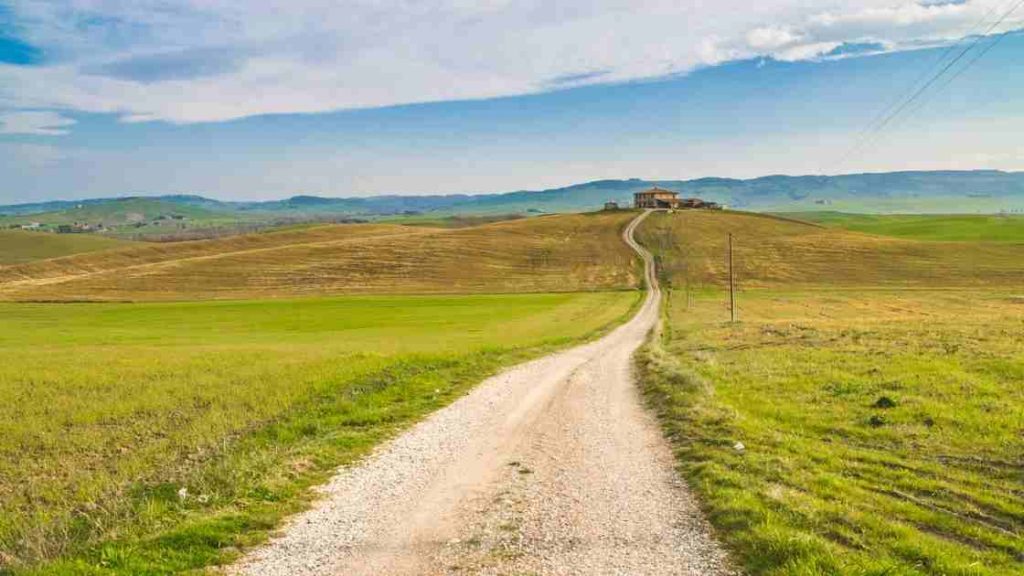
Act Three of the Hero’s Journey often moves faster than the other acts of our story. In The Return, we see how the protagonist’s newfound knowledge and achievement of their goal affect their life and world.
This step of The Hero’s Journey is crucial because it gives us a glimpse as to what our character has learned from this journey, which is the ultimate test of whether they have truly successfully achieved their quest or not.
Let’s dive into the remaining scenes of our story.
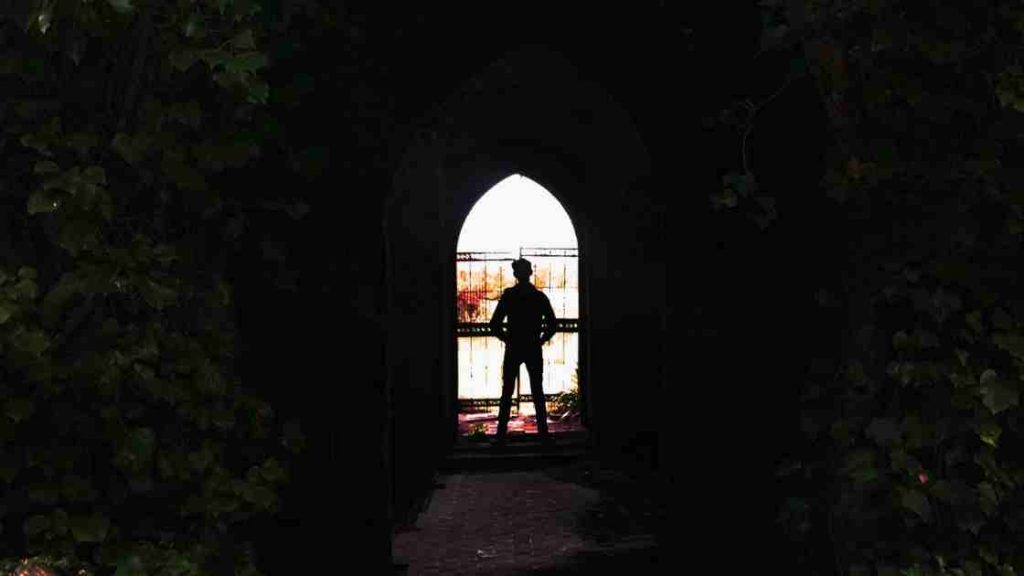
The Refusal of the Return is when our protagonist does not want to return home after achieving their goal. They may be too frightened of what awaits them, or they may not want to give up the new life and world they have found themselves in.
Just as they were hesitant to go on the adventure in the beginning, they are also hesitant to go back.
They may be concerned with how their “boon” might affect the world – such as a magic potion or secret power that could get into the wrong hands. They may worry about what consequences they may face when they go back, or they may be afraid nothing is left for them to return to.
In some cases, our hero doesn’t want to leave because they have become comfortable with their new world and who they have become.
However, to truly finish the quest, our hero must return home. This refusal of return helps build up the tension to the final resolution of the story. This is when the reader questions whether the hero will return home – and wonders with great anticipation of what might happen when it happens.

The Magic Flight is the final conflict to the story where our protagonist must escape danger, sometimes using their newfound knowledge or boon. This is a way of symbolically proving that they have truly learned from this journey and are ready to bring it back home with them.
This part of The Hero’s Journey often involves a chase scene or battle against an opposing force. However, this is the final push necessary push they need to realize they must make the journey home because it becomes apparent they cannot stay where they are.

The Rescue From Without step of the Hero’s Journey is when the protagonist is rescued from danger by an outside source.
This outside source may be an ordinary person, or it might resemble deus ex machina, or god-like intervention, where something rescues our hero from an impossible situation, such as lightning striking that saves the day for our hero.
When you are writing the rescue scene, the circumstances of the rescue must be believable. Most people do not like the deus ex machina in writing simply because it’s too easy.
Those of us who have lived life long enough all know that a magic fairy godmother isn’t going to swoop us in, wave her wand and make all our problems disappear.
After being rescued, the hero truly has no other choice except to return home.

The Crossing of the Return Threshold is when our protagonist finally returns home after completing their adventure and achieving their goal.
This is the part of The Hero’s Journey where we see what they have learned from this journey and how it affects them.
In this story scene, you will want to answer the following questions: How has the hero changed from their journey? How is their old world different from when they left? How do they acclimate to being back home? Finally, how do others react to their return?

This is the part of The Hero’s Journey where our protagonist has reached their full potential. They have overcome their fears and grown in ways they could never have imagined.
They are a new person and have been forever changed by what they’ve experienced. Yet, it allows them to go back into society with heightened wisdom, power, skills, or resources that will help others in need when called upon again.
In this scene, we see the hero apply their knowledge and share it with the world.

After our hero has conquered all of their fears and has put their wisdom to good use, the hero finally has the freedom to do anything they want.
This is the resolution of our story – we see our heroes accomplish their “happily ever after.” Their fears or concerns no longer control them, and nothing exists between them and what they want.
More often than not, this closing chapter of the story gives the reader some closure. We want some type of affirmation that the story is truly complete. We get a glimpse of what our protagonist will do with their life now that they are free to live it.
If you’re looking for a story structure that is proven and effective, the Hero’s Journey might be perfect for you. With 17 stages of development, it will help you create an engaging plot with your readers and develop strong characters .
And of course, while the Hero’s Journey is the classic beat sheet for writers, remember you don’t always have to dedicate one chapter to each step. Sometimes you can combine 2-3 steps in one scene, while other steps might take several chapters to cover.
The important thing is you now know the Hero’s Journey! We hope this is helpful for you – whether you are writing your own novel or studying the Hero’s Journey arc in literature. Most of all, we hope that by breaking down each step of the Hero’s Journey, you can better understand all of it.
Do you have any thoughts or questions on the Hero’s Journey? We’d love to hear from you in the comments section below!
Chelle Stein wrote her first embarrassingly bad novel at the age of 14 and hasn't stopped writing since. As the founder of ThinkWritten, she enjoys encouraging writers and creatives of all types.
Similar Posts
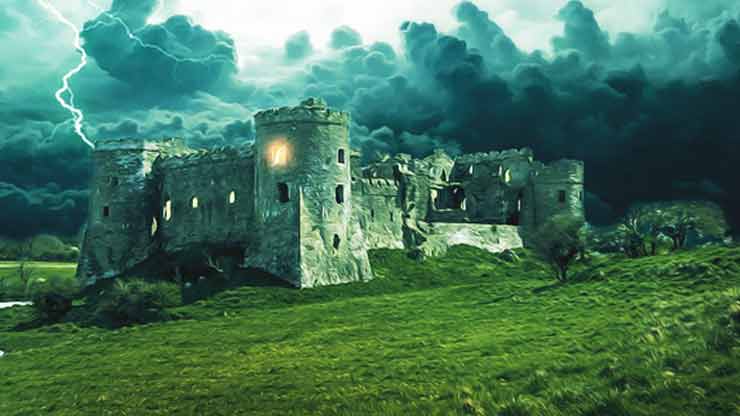
5 Signs of a Strong Novel Plot
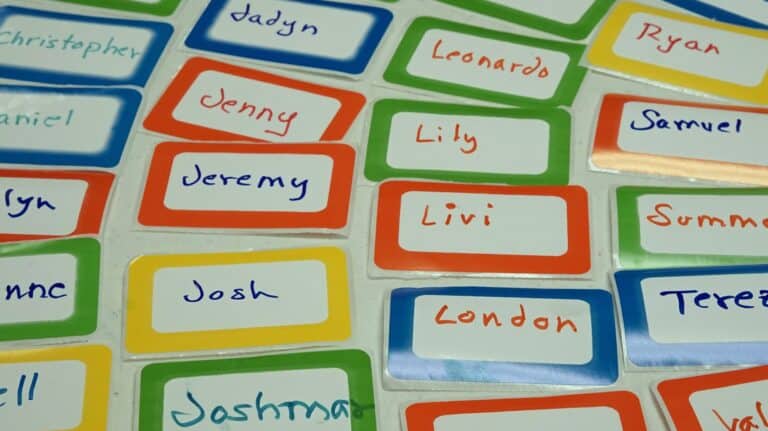
How to Name Your Characters
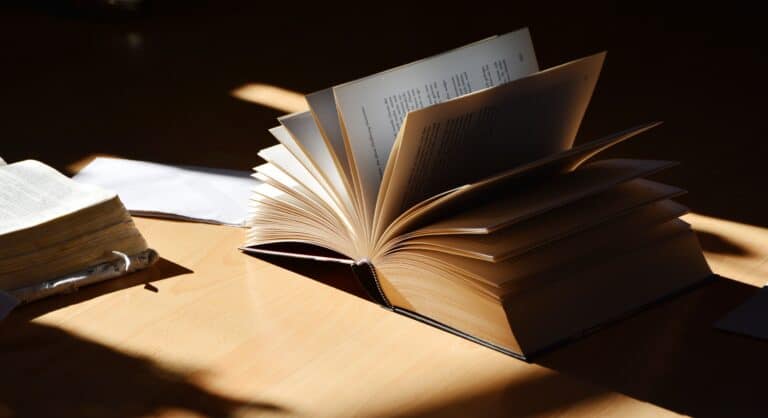
How to Write a Novel: Writing a Book in 4 Steps
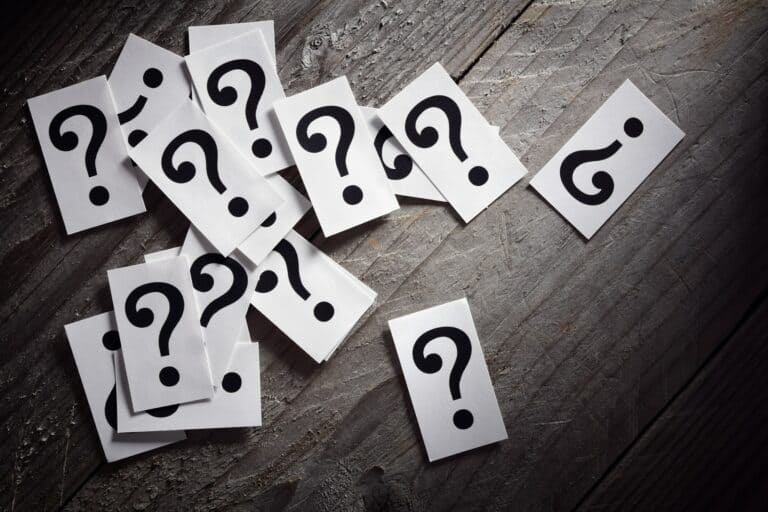
160+ Character Development Questions & Free Printable Worksheet

How to Write Dialogue: 6 Tips for Writing Powerful Dialogue

How to Avoid Over Planning Your Novel
So if you’re writing an epic fantasy that will be a series, are these 17 steps strung out across the entire series, or redone in each book?
Thank you for such a helpful article. This has helped me fill in a glaring hole in my novel outline and shown me what was missing. I’m really grateful for this advice.
Glad it was helpful for you Laura!
Leave a Reply Cancel reply
Your email address will not be published. Required fields are marked *
Save my name, email, and website in this browser for the next time I comment.
The Hero’s Journey: 12 Steps That Make Up the Universal Structure of Great Stories
by David Safford | 0 comments
At some in your writer's life, you've probably come across the term Hero's Journey. Maybe you've even studied this guide for storytelling and applied it to your own books—and yet, something about your own application felt off. You wanted to learn more, but didn't know where to start.
Maybe you needed a resource that would simplify the hero's journey steps and all the other major details instead of complicate them.
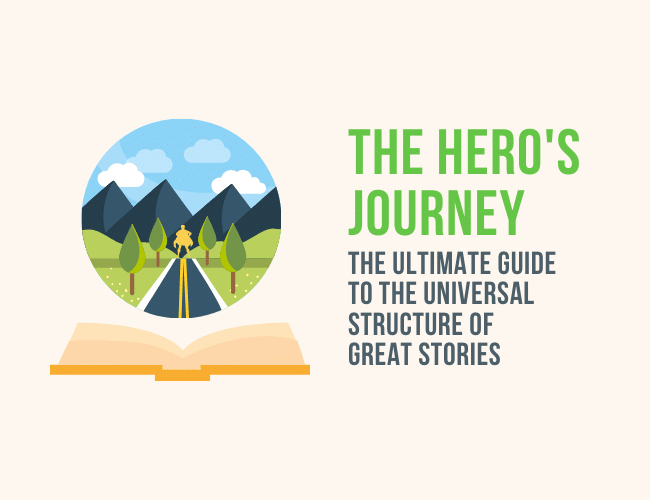
The Hero's Journey is as old as humanity itself. And through history, this single story form has emerged over and over again. People from all cultures have seemed to favor its structure, and its familiar types of characters (archetypal hero, anyone?), symbols, relationships, and steps.
If you want to build or strengthen your writing career and win a following of many happy readers, you want this particular tool in your writer's toolbox.
Let's dive in.
Need help applying The Hero's Journey to your story outline and manuscript? Download this free Hero's Journey worksheet now!
Why I Love the Hero's Journey (And You Will, Too)
Like many, I grew up loving Star Wars. I especially loved the music and bought the soundtracks at some point in middle school. When my parents weren't home and I had the house all to myself, I'd slip one of the CDs into my stereo, crank the volume up, and blast the London Symphony Orchestra. I even pretended I was conducting the violins and timpani myself.
I know it's nerdy to admit. But we love what we love, and I love the music of great movies.
In a way, the Hero's Journey is like a soundtrack. It follows familiar beats and obeys age-old principles of human emotion. We can't necessarily explain why a piece of music is so beautiful, but we can explain what it does and simply acknowledge that most people like it.
As I've come to understand Joseph Campbell's groundbreaking monomyth theory, commonly known as the Hero's Journey, I've fallen deeper and deeper in love with it.
But it's important to make sure you know what it is, and what it isn't.
The Hero's Journey isn't a formula to simply follow, plugging in hackneyed characters into cliched situations.
It's not “selling out” and giving up your artistic integrity
The Hero's Journey is a set of steps, scenes, character types, symbols, and themes that tend to recur in stories regardless of culture or time period. Within these archetypes are nearly infinite variations and unique perspectives that are impacted by culture and period, reflecting wonderful traits of the authors and audiences.
Also, the Hero's Journey is a process that your reader expects your story to follow, whether they know it or not. This archetype is hard-wired into our D.N.A. Let's look at how to use it to make your own stories stronger.
How to Use This Hero's Journey Post
In the beginning, there were stories. These stories were told by mothers, soldiers, and performers. They were inscribed on the walls of caves, into tablets of stone, and on the first sheets of papyrus.
This is how the Hero's Journey was born.
In this post, I'll walk you through the Hero's Journey twelve steps, and teach you how to apply them into your story. I'll also share additional resources to teach you some other Hero's Journey essentials, like character archetypes, symbols, and themes. By the end of this post, you'll be able to easily apply the Hero's Journey to your story with confidence.
And don't skip out on the practice exercise at the end of the post! This will help you start to carve out the Hero's Journey for your story with a practical fifteen minute exercise—the best way to really retain how the Hero's Journey works is to apply it.
Table of Contents: The Hero's Journey Guide
What is the Hero's Journey?
Why the Hero's Journey will make you a better writer
The Twelve-Step Hero's Journey Structure
- The Ordinary World
- The Call to Adventure
- The Refusal of the Call
- Meeting the Mentor
- Crossing the Threshold
- Trials, Allies, and Enemies
- The Approach
- The Road Back
- The Resurrection
- Return With the Elixir
5 Essential Hero's Journey Scenes
A Guide to Structuring Your Hero's Journey
Bonus! Additional Hero's Journey Resources
- 5 Character Archetypes
- 5 Hero's Journey Symbols
- 5 Hero's Journey Themes
What Is the Hero's Journey?
The Hero's Journey is the timeless combination of characters, events, symbols, and relationships frequently structured as a sequence of twelve steps. It is a storytelling structure that anyone can study and utilize to tell a story that readers will love.
First identified and defined by Joseph Campbell, the Hero's Journey was theorizied in The Hero With a Thousand Faces . Today, it has been researched and taught by great minds, some including Carl Jung and Christopher Vogler (author of The Writer's Journey: Mythic Structure for Writers ).
This research has given us lengthy and helpful lists of archetypes , or story elements that tend to recur in stories from any culture at any time.
And while some archetypes are unique to a genre, they are still consistent within those genres. For example, a horror story from Japan will still contain many of the same archetypes as a horror story from Ireland. There will certainly be notable differences in how these archetypes are depicted, but the tropes will still appear.
That's the power of the Hero's Journey. It is the skeleton key of storytelling that you can use to unlock the solution to almost any writing problem you are confronted with.
Why the Monomyth Will Make You a Better Writer
The Hero's Journey is the single most powerful tool at your disposal as a writer.
But it isn't a “rule,” so to speak. It's also not a to-do list.
If anything, the Hero's Journey is diagnostic, not prescriptive. In other words, it describes a story that works, but doesn't necessarily tell you what to do.
But the reason you should use the Hero's Journey isn't because it's a great trick or tool. You should use the Hero's Journey because it is based on thousands of years of human storytelling.
It provides a way to connect with readers from all different walks of life.
This is why stories about fantastical creatures from imaginary worlds can forge deep emotional connections with audiences. Hollywood knows this, and its best studios take advantage. As an example, The Lord of the Rings, by J. R. R. Tolkien, contains mythical creatures like elves and hobbits. Yet it is Frodo's heroic journey of sacrifice and courage that draws us to him like a magnet.
Learn how to easily apply the Hero's Journey 12 Steps to your books in this post. Tweet this
David Safford
You deserve a great book. That's why David Safford writes adventure stories that you won't be able to put down. Read his latest story at his website. David is a Language Arts teacher, novelist, blogger, hiker, Legend of Zelda fanatic, puzzle-doer, husband, and father of two awesome children.

Submit a Comment Cancel reply
Your email address will not be published. Required fields are marked *
Submit Comment
Join over 450,000 readers who are saying YES to practice. You’ll also get a free copy of our eBook 14 Prompts :
Popular Resources
Book Writing Tips & Guides Creativity & Inspiration Tips Writing Prompts Grammar & Vocab Resources Best Book Writing Software ProWritingAid Review Writing Teacher Resources Publisher Rocket Review Scrivener Review Gifts for Writers
Books By Our Writers

You've got it! Just us where to send your guide.
Enter your email to get our free 10-step guide to becoming a writer.
You've got it! Just us where to send your book.
Enter your first name and email to get our free book, 14 Prompts.
Want to Get Published?
Enter your email to get our free interactive checklist to writing and publishing a book.
Practice With Us
- Our Teachers
- Daily Meditations
- Online Education
- The Living School

The Hero’s Journey
Richard Rohr uses the framework of the “hero’s journey” to describe the path of spiritual transformation. He points to The Odyssey as a powerful metaphor:
The universe story and the human story are a play of forces rational and nonrational, conscious and unconscious, involving fate and fortune, nature and nurture. Forces of good and evil play out their tragedies and their graces—leading us to catastrophes, backtracking, mutations, transgressions, regroupings, enmities, failures, mistakes, and impossible dilemmas. The Greek word for tragedy means “goat story.” The Odyssey is a primal goat story, where poor Odysseus keeps going forward and backward, up and down—but mostly down—all the way home to Ithaca. [1]
The hero’s journey is a key myth that keeps repeating in different cultures. I learned about it from mythologist Joseph Campbell. The hero or heroine—the gender really doesn’t matter—must leave home or business as usual. They have to leave what feels like sufficiency or enoughness. There is a sense of necessity in discovering the bigger world. We’ve got to know there’s a bigger world than my home state of Kansas, or wherever we’re from. In The Wizard of Oz , Dorothy has to leave Kansas—and she’s taken away by a tornado. We usually don’t leave home willingly. More often than not, we’re taken there by some circumstance, shipwreck, accident, death, or suffering of some sort. That’s called the departure . The hero has to lose or walk away from their sense of order and enter some kind of disorder.
Then there’s the encounter . After the hero leaves their castle or their stable home, they have to experience something bigger, something better, something that is more real and more demanding of their real energies. Of course, that takes different forms. In the Gospels, after his baptism, Jesus goes into the desert for forty days.
Surprisingly, the third stage of the hero’s journey is the return . The hero’s journey is not to just keep going to new places, making the trip a vacation or travelogue. We have to return to where we started and know it in a new way and do life in a new way. We are not somehow “beyond” the order and disorder of our lives; we’ve learned how to integrate both of them. This stage of return is so rarely taught. What is good about the order, what is good about the disorder, and how do we put them together? That is the “reorder” or the return.
We have the departure , then we have the encounter , which will always lead to some kind of descent away from status, away from security, away from ascent. Eventually something happens, something gets transformed, and then there’s the return . [2]
References: [1] Adapted from Richard Rohr, Falling Upward: A Spirituality for the Two Halves of Life , rev. ed. (San Francisco, CA: Jossey-Bass, 2024), 36.
[2] Adapted from Richard Rohr, Falling Upward: Life as a Spiritual Journey (Albuquerque, NM: Center for Action and Contemplation, 2020–), online course.
Image credit: Jeremy Bishop, Untitled (detail), Australia, 2016, photograph, public domain . Click here to enlarge image .
The desert and the new sprout of spring green are part of the journey.
Explore Further
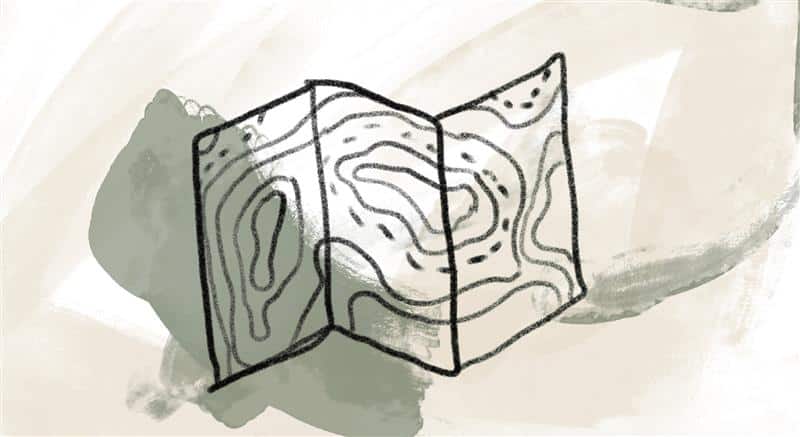
Meet The Team

Story from Our Community:
I am part of a group of 6 friends who have started our own “journey” within the mystery of God. Fr. Richard’s Daily Meditations and CAC’s podcasts are beautiful guides as each of us walks different phases of our spiritual growth. Our next adventure is a discussion on Radical Resilience. Thank you from Canada. —Richard P.
This year’s theme

Radical Resilience
We live in a world on fire. This year the Daily Meditations will explore contemplation as a way to build Radical Resilience so we can stand in solidarity with the world without burning up or burning out. The path ahead may be challenging, but we can walk it together.
The archives

Explore the Daily Meditations
Explore past meditations and annual themes by browsing the Daily Meditations archive. Explore by topic or use the search bar to find wisdom from specific teachers.
Join our email community
Sign-up to receive the daily meditations, featuring reflections on the wisdom and practices of the christian contemplative tradition..
Hero’s Journey: 12 Steps, Examples, Use Cases
- Post author By Punit Thakkar
- Post date January 7, 2024
Once you’ve decided that you need to Outline your story before you start writing the screenplay, you will need to choose between the various storytelling structures out there. The three-act structure as a narrative breakdown can be applied to almost any story. But to further breakdown your story in beats, certain storytelling frameworks can be quite useful. One such framework is the Hero’s Journey by Joseph Campbell.
Who is Joseph Campbell?
Joseph Campbell (1904–1987) was an American mythologist, writer, and lecturer best known for his work in comparative mythology and his exploration of the hero’s journey. Campbell’s most influential work is the concept of the monomyth or the hero’s journey. This was the result of his examination of common patterns and themes found in the myths and legends of various cultures throughout history.
What is the Hero’s Journey?
In 1949, Campbell published his book “ The Hero with a Thousand Faces “. In this seminal work, he examined common patterns and themes found in the myths and legends of various cultures throughout history. The phrase “Hero’s Journey” suggests that myths and stories from different cultures often follow a similar narrative structure. The hero typically embarks on an adventure, faces challenges and trials, undergoes a transformation, and returns home changed. It was later popularized by screenwriter, Christopher Vogler, in his book “ The Writer’s Journey “. Vogler condensed the principles into a 12-step framework.
12 Steps of The Hero’s Journey
Let’s take a look at each of the 12 steps that you can use to outline your story. To illustrate the same, we’ll be using the application of this concept with a movie where the filmmaker was famously inspired by the Hero’s Journey template while writing his film ie. Star Wars (1977).
1. Ordinary World
The hero begins in their familiar environment, often characterized by routine and unawareness of the larger journey. This setting establishes the baseline for the hero’s growth.
Application : Luke Skywalker resides on the desert planet Tatooine, leading a mundane life as a farm boy.
2. Call to Adventure
An external event or internal desire disrupts the hero’s ordinary life, presenting an opportunity or challenge that sets the journey in motion. The call often introduces a quest or a significant change.
Application : Obi-Wan Kenobi invites Luke to join him in the quest to deliver the Death Star plans to the Rebel Alliance.
3. Refusal of the Call
Faced with uncertainty, fear, or a sense of duty to the familiar world, the hero hesitates or rejects the call initially. This reluctance adds depth to the hero’s internal conflict.
Application : Luke hesitates to leave Tatooine, citing responsibilities and family ties.
4. Meeting the Mentor
A mentor figure appears, providing guidance, wisdom, or supernatural aid. The mentor equips the hero with the tools or knowledge necessary for the journey.
Application : Obi-Wan becomes Luke’s mentor, introducing him to the Force and encouraging his journey.
5. Crossing the Threshold
The hero decides to leave the ordinary world, venturing into the unknown or a special world. This crossing represents a commitment to change and growth.
Application : Luke, with Obi-Wan, departs Tatooine and enters the larger galaxy.
6. Tests, Allies, Enemies
The hero encounters challenges, forms alliances with companions, and faces adversaries. These experiences shape the hero’s character and prepare them for more significant trials.
Application : Luke, Han Solo, and Princess Leia face various trials, forming alliances and encountering Imperial forces.
7. Approach to the Inmost Cave
The hero approaches a central challenge or a crucial location that holds the key to their quest. This stage builds anticipation and sets the stage for the ordeal.
Application : The Rebel Alliance plans to attack the Death Star, a critical mission.
The hero undergoes a severe trial, facing the most significant danger or fear. This moment tests the hero’s resolve and marks a pivotal point in the journey.
Application : Luke participates in the Battle of Yavin, aiming to destroy the Death Star amidst intense opposition.
Following the ordeal, the hero reaps a reward, gains new insight, or achieves success. This stage highlights the hero’s growth and the tangible or intangible benefits of the journey.
Application : Luke successfully destroys the Death Star, earning recognition and hero status.
10. The Road Back
The hero begins the journey back to the ordinary world, often encountering new challenges or facing the consequences of their actions. This stage introduces the final hurdles.
Application : The Rebels regroup and plan their next moves after the Death Star’s destruction.
11. Resurrection
The hero faces a final, life-altering test, representing a symbolic death and rebirth. This transformative experience solidifies the hero’s evolution.
Application : Luke confronts Darth Vader and the Death Star’s destruction leads to a symbolic rebirth.
12. Return with the Elixir
The hero returns to the ordinary world, bringing back the elixir—a tangible or metaphorical boon gained during the journey. This stage showcases the hero’s ability to contribute positively to the ordinary world.
Application : Luke returns to Tatooine, having become a skilled pilot and a key figure in the Rebel Alliance.
As we saw, Star Wars follows the Hero’s Journey with Luke Skywalker as the protagonist. From his ordinary life on Tatooine to the battles against the Empire and the ultimate confrontation with Darth Vader, the film adheres to the monomyth structure.
Use Cases: Stories Tailored for Hero’s Journey
One of the common beliefs around this template is that it typically applies to fantasy and adventure genres. While those genres are more naturally suited, the Hero’s Journey is equally applicable to different kinds of movies. It is particularly useful for stories that fall within the following genres or themes:
Fantasy and Adventure
The Hero’s Journey is frequently employed in fantasy tales where characters embark on epic quests. Examples include “The Lord of the Rings,” “Harry Potter,” and “The Chronicles of Narnia.”
Coming-of-Age Stories
Many coming-of-age narratives use the Hero’s Journey to depict a character’s maturation and self-discovery. Films like “The Karate Kid” and “Stand by Me” exemplify this application.
Science Fiction Epics
Stories set in futuristic or otherworldly settings often utilize the Hero’s Journey. “Star Wars” and “The Matrix” showcase how this structure can be applied in the science fiction genre.
Mythology and Legends
The Hero’s Journey is deeply rooted in mythology and is thus well-suited for stories inspired by ancient myths and legends. Examples include adaptations of Greek myths or Arthurian legends.
Quest Narratives
Any story that involves a quest, whether it’s a literal journey or a metaphorical one, can benefit from the Hero’s Journey structure. “Indiana Jones” and “The Odyssey” are classic examples.
Superhero Origin Stories
Many superhero origin stories align with the Hero’s Journey as characters discover their powers, face adversaries, and undergo personal growth. Examples include “Spider-Man,” “Wonder Woman,” and “Black Panther.”
Historical and Period Dramas
Even in stories set in historical or period settings, the Hero’s Journey can be applied. Films like “Braveheart” and “Gladiator” showcase protagonists facing significant challenges and transformation.
Character-Driven Dramas
While traditionally associated with more fantastical genres, the Hero’s Journey can also be adapted for character-driven dramas. Movies like “Forrest Gump” and “The Pursuit of Happyness” demonstrate this versatility.
Let’s take a look at one such example using the poignant, “non-heroic” drama written by Greta Gerwig ie. Ladybird.
Ladybird – Hero’s Journey
1. The Ordinary World : Christine “Lady Bird” McPherson navigates her senior year in high school in Sacramento, California. Dissatisfied with her surroundings and yearning for something more, she grapples with the challenges of adolescence.
2. Call to Adventure : Lady Bird desires to escape Sacramento and attend college on the East Coast, envisioning it as the key to a more fulfilling life beyond her current circumstances.
3. Refusal of the Cal l: Lady Bird’s family faces financial struggles, and her dream of attending an expensive East Coast college seems unattainable. She initially grapples with the reality of her family’s limitations.
4. Meeting the Mentor : Sister Sarah Joan, Lady Bird’s school principal, becomes a mentor figure, encouraging her to pursue her dreams and offering guidance.
5. Crossing the Threshold : Lady Bird applies to colleges in New York, symbolizing her venture into a world beyond Sacramento and her family’s constraints.
6. Tests, Allies, Enemies : Lady Bird navigates friendships, romance, and conflicts with her family, forming alliances with friends like Julie and facing challenges that shape her character.
7. Approach to the Inmost Cave : Lady Bird’s relationships face challenges as she experiences heartbreak, and she confronts the reality of her family’s financial struggles.
8. Ordeal : Lady Bird’s relationship with her mother reaches a breaking point, leading to a confrontation that forces both to confront their feelings and expectations.
9. Reward : Lady Bird gains insight into her identity and aspirations, realizing the value of her family and the impact of her choices.
10. The Road Back : Lady Bird leaves Sacramento for college, symbolizing her journey back into the world with newfound wisdom and self-discovery.
11. Resurrection : Lady Bird’s return home prompts reconciliation and understanding with her family, particularly her mother, as they navigate the complexities of love and acceptance.
12. Return with the Elixir : Lady Bird’s return home marks a resolution, bringing a sense of acceptance and understanding, not only for herself but also for her family.
In Lady Bird, the Hero’s Journey is elegantly woven into the fabric of a coming-of-age story. It captures her challenges, growth, and self-discovery inherent in the journey from adolescence to adulthood, offering a nuanced exploration of identity, family dynamics, and the pursuit of dreams.
Exceptions: Not Every Plot Fits the Hero’s Journey
Whilst the Hero’s Journey is a flexible template and can be adapted to various genres and themes, it might not be the best fit for certain stories; especially the ones that intentionally subvert traditional narrative structures, focus solely on ensemble casts without a clear central protagonist, or explore experimental storytelling methods. Here are a few examples:
Experimental Films
Experimental films often prioritize unconventional storytelling methods, abstract concepts, and non-linear narratives. In such cases, the traditional stages of the Hero’s Journey may not be evident, as these films may prioritize artistic expression over a structured plot.
Example: Koyaanisqatsi (1982) Directed by Godfrey Reggio, “Koyaanisqatsi” is an experimental documentary film that uses time-lapse photography and innovative editing techniques to depict the relationship between humans, nature, and technology. The film doesn’t follow a traditional narrative structure or a hero’s journey but rather offers a visual and auditory exploration of its themes.
Documentaries
Some documentaries aim to capture real-life events, explore social issues, or provide informative content. The Hero’s Journey, with its focus on fictional characters and their transformative arcs, may not align with the goals of documentary filmmaking.
Example: Grizzly Man (2005) Directed by Werner Herzog, this documentary explores the life and death of Timothy Treadwell, who lived among grizzly bears in Alaska. The film is a character study and examination of nature, presenting real-life events without following a fictional hero’s journey.
Slice-of-Life Dramas
Movies that focus on depicting everyday life without a central conflict or clear protagonist’s journey might not adhere strictly to the Hero’s Journey structure. The emphasis is often on realism and capturing ordinary moments rather than a hero’s transformative adventure.
Example : Boyhood (2014) Directed by Richard Linklater, “Boyhood” is a coming-of-age film that spans over 12 years, following the life of a boy named Mason. The film captures ordinary moments in Mason’s life without a traditional central conflict, showcasing the challenges and joys of growing up.
Art House Cinema
Art house films often prioritize artistic expression, symbolism, and unique narrative structures. These films may not follow a traditional hero’s arc, as the focus might be on creating an emotional or intellectual experience rather than a clear, linear narrative.
Example: Mulholland Drive (2001) Directed by David Lynch, this enigmatic film is known for its surreal and dreamlike narrative. Lynch weaves a complex story with multiple layers, challenging conventional storytelling structures and incorporating elements of psychological horror and mystery.
Episodic or Anthology Films
Films with episodic or anthology formats, where multiple stories or vignettes are presented, might not follow a single hero’s journey across the entire film. Each segment may have its own thematic or narrative structure.
Example: Pulp Fiction (1994) Directed by Quentin Tarantino, “Pulp Fiction” is famously known for its non-linear narrative and multiple interconnected storylines. Each segment features different characters and situations, creating an anthology structure rather than following a single hero’s journey.
Certain Comedy Films
While many comedies incorporate elements of the Hero’s Journey, certain slapstick or purely situational comedies may prioritize humor over a structured hero’s arc. The primary goal is to generate laughs rather than guide the protagonist through a transformative journey.
Example: Monty Python and the Holy Grail (1975) Directed by Terry Gilliam and Terry Jones, this comedy classic is a parody of the Arthurian legend. The film is known for its absurd humor, satirical elements, and episodic structure, deviating from a traditional hero’s journey while delivering comedic brilliance.
Non-Narrative or Abstract Films
Films that lean heavily on visual aesthetics, abstract concepts, or non-narrative structures may not adhere to the Hero’s Journey. The focus is on evoking emotions or exploring themes through visuals rather than following a traditional story arc.
Example: Samsara (2011) Directed by Ron Fricke, this non-narrative documentary is a visual and musical journey through various cultures and landscapes. The film emphasizes stunning imagery and thematic exploration without a conventional plot or character-driven narrative.
These examples showcase the diversity of writing styles and genres that deviate from the traditional hero’s journey. There’s no one-size-fits-all. It’s important to know the technique that suits your style, be it Hero’s Journey or alternative frameworks like Save The Cat , Dan Harmon’s Story Circle , or any other. If none of those particularly suit you and you would still like to outline, you can create your custom template . Scrite allows you to use existing templates or create or own. You can download the app to get started for free.
- Tags 12 steps heros journey , chris vogler , heros journey , joseph campbell , ladybird , ladybird story structure , storytelling structure , writers journey
Being a demigod isn’t easy… and neither is filling the shoes of beloved characters. While embodying characters on a quest, Walker, Leah, and Aryan embark on an adventure of their own. Alongside a passionate cast and crew, follow these three young heroes as they step into worlds fit for gods, battle unforgettable creatures, and perform legendary stunts. Oh, and they still have to go to school.
A Hero’s Journey: The Making of Percy Jackson and the Olympians
Being a demigod isn’t easy… and neither is filling the shoes of beloved characters in a massive television series. While embodying characters on a quest, Walker, Leah, and Aryan embark on an epic adventure of their own. Alongside a passionate cast and crew, follow these three young heroes on the set of “Percy Jackson and the Olympians” as they step into worlds fit for gods, battle unforgettable creatures, and perform legendary stunts. Oh, and they still have to go to school. Produced by Evolve Studios, this journey full of challenges and growth uncovers the magic behind-the-Mist.
You May Also Like

IMAGES
VIDEO
COMMENTS
View the full video and lesson at: http://ed.ted.com/lessons/what-makes-a-hero-matthew-winklerTo learn about how to leverage myth-making in marketing head ov...
This is a quick summary of The Hero's Journey stages by Joseph Campbell.Subscribe: https://www.youtube.com/channel/UCDlC2yGOv2RfN5W9moPZN1Q?ab_channel=RAWSpi...
The Hero's Journey is a concept that was developed by Joseph Campbell in his book the Hero with a Thousand Faces. This story arch can be seen in our most pop...
This film is an exploration of famed Mythologist Joseph Campbell's studies and their continuing impact on our culture.Through interviews with visionaries from a variety of fields interwoven with enactments of classic tales by a sweet and motley group of kids, the film navigates the stages of what Campbell dubbed The Hero's Journey: the challenges, the fears, the dragons, the battles, and the ...
Welcome to Exploring the 12 Stages of the Hero's Journey, where we explore each of the twelve stages and how your screenplays could benefit from them. We'll trace down the origins of the Hero's Journey, tracing it back to Joseph Campbell's original 17-stage Monomyth that was inspired by his studies on how the journey of the archetypal ...
The 12 steps of the hero's journey. The hero's journey ends where it begins, back at the beginning after a quest of epic proportions. The 12 steps are separated into three acts: departure (1-5) initiation (5-10) return (10-1) The hero journeys through the 12 steps in a clockwise fashion. As Campbell explains:
He identified a common pattern in myths and stories from around the world, a pattern he called the monomyth or the Hero's Journey. The Hero's Journey is a template that outlines the stages a hero typically goes through in a story. While there may be variations and adaptations, the core structure remains consistent.
Video. by CrashCourse. published on 23 October 2017. Let's get Heroic with Mike Rugnetta. This week on Crash Course World Mythology, we're talking about the Hero's Journey and the Monomyth, as described by Joseph Campbell. Campbell's theories about the shared qualities of human story telling are pretty cool. And they've been hugely influential ...
This ultimate Hero's Journey writing guide will define and explore all quintessential elements of the Hero's Journey—character archetypes, themes, symbolism, the three act structure, as well as 12 stages of the Hero's Journey. We'll even provide a downloadable plot template, tips for writing the Hero's Journey, and writing prompts ...
9. Reward (Seizing the Sword) In which the Hero sees light at the end of the tunnel. Our Hero's been through a lot. However, the fruits of their labor are now at hand — if they can just reach out and grab them! The "reward" is the object or knowledge the Hero has fought throughout the entire journey to hold.
I've put together a 30 minute video describing the Hero's Journey step-by-step. Instead of re-reading books on the subject I've tackled the study by making t...
The hero's journey is a popular form of storytelling, particularly with today's screenwriters. It also works well for novels and even non-fiction. Work through these 12 steps the next time you outline a book or story. Understanding the rules and mythology of this framework and see where your plot takes you.
1. Departure. In brief, the hero is living in the so-called "ordinary world" when he receives a call to adventure. Usually, the hero is unsure of following this call—known as the "refusal of the call"—but is then helped by a mentor figure, who gives him counsel and convinces him to follow the call. 2. Initiation.
Here's an overview of all of the 17 steps of Joseph Campbell's Hero's Journey: Act One: The Departure. The Call to Adventure. Refusal of the Call. Supernatural Aid. The Crossing of the First Threshold. Belly of the Whale. Act 2: The Initiation: The Road of Trials.
Step 7: Approach to the Inmost Cave. Eventually the Hero must arrive at the destination, and that destination is frequently a fortress, cave, or dungeon crawling with monsters, enemies, or traps. This will lead to the story's climax, but the best heroic journeys include a step before the big fight.
Drawing inspiration from the enchanting soundscapes of video games, "Hero's Journey" offers a unique blend of melodic harmonies and soothing visuals. Join beloved video game characters as they ...
The Hero's Journey. Sunday, February 18, 2024. Richard Rohr uses the framework of the "hero's journey" to describe the path of spiritual transformation. He points to The Odyssey as a powerful metaphor: The universe story and the human story are a play of forces rational and nonrational, conscious and unconscious, involving fate and ...
In a world where everybody can be somebody, the hero's journey is the story of every single one of us. Join the discussion: http://www.twitter.com/ESL http:...
In his best-known work The Hero with a Thousand Faces published in 1949, Joseph Campbell describes the archetypal Hero's Journey or "monomyth" shared by the ...
The Hero's Journey is frequently employed in fantasy tales where characters embark on epic quests. Examples include "The Lord of the Rings," "Harry Potter," and "The Chronicles of Narnia." Coming-of-Age Stories. Many coming-of-age narratives use the Hero's Journey to depict a character's maturation and self-discovery.
Oh, and they still have to go to school. Produced by Evolve Studios, this journey full of challenges and growth uncovers the magic behind-the-Mist. Duration: 50m. Release Date: 2024. Genre: Documentary. Rating: Director: Joel Edwards. Starring: Walker Scobell Leah Sava Jeffries Aryan Simhadri Rick Riordan Dan Shotz Jonathan E. Steinberg.
Welcome to your Hero's Journey. Here we celebrate the geeky and the passionate, and view it as a path towards healing. While this channel is not counseling itself, here we present resources you ...